Every major city has its famous neighborhoods. London has Kensington and Notting Hill. New York boasts Tribeca and the East Village. Rome charms with Trastevere and the Centro Storico.
Paris does things a little differently.
Instead of named neighborhoods, the city is divided into 20 numbered arrondissements. Each one has its own character, attractions, and local culture. To truly understand Paris, you need to understand its arrondissements.
What Is an Arrondissement?
The word arrondissement comes from the French verb arrondir, meaning “to round off” or “encircle.” In Paris, it refers to the city’s official administrative districts.
But these districts aren’t random. Picture Paris as a spiral, like a snail’s shell. At the center is the 1st Arrondissement, home to the Louvre and the city’s historic heart. From there, the arrondissements wind outward in a clockwise pattern.
This layout makes it easy to navigate. The lower the number, the closer you are to the city center—and the more likely you are to find famous landmarks.
Right Bank vs. Left Bank
The River Seine divides Paris into two sections:
- Right Bank (north of the Seine): Includes the 1st-4th, 8th-12th, 16th-20th arrondissements.
- Left Bank (south of the Seine): Includes the 5th-7th, 13th-15th arrondissements.
The first four arrondissements make up Paris Centre, the city’s most historic and central area. Many consider the first eight arrondissements to be central Paris, as they contain most of the city’s famous landmarks, museums, and attractions.
As you move outward, the arrondissements take on different personalities. Some are trendy and artistic, others more residential, and some offer vast green spaces and hidden gems.
Why Understanding Arrondissements Matters
Each Paris arrondissement has a unique feel. Montmartre in the 18th has a village-like charm, while the 13th is known for modern skyscrapers and Paris’s Chinatown.
Whether you’re here for famous sights, quiet cafés, or lesser-known neighborhoods, understanding the arrondissements helps you explore Paris like a pro.
This guide will take you through each district, helping you decide where to stay, what to see, and what makes each area special.
This post may contain affiliate links, meaning I get a small commission if you decide to make a purchase through my links, at no cost to you.
Paris Arrondissements: At a Glance
| Arrondissement | Key Attractions & Neighborhoods |
| 1st | Louvre, Palais Royal, Tuileries Garden, Place Vendôme, Rue Saint Honoré |
| 2nd | Bourse, Galerie Vivienne, Opéra-Comique |
| 3rd | Picasso Museum, Carreau du Temple, Arts et Métiers Museum, Le Marais |
| 4th | Notre Dame Cathedral, Hôtel de Ville, Place des Vosges, Centre Pompidou, Victor Hugo Museum, Le Marais |
| 5th | Latin Quarter, Panthéon, Sorbonne University, Jardin des Plantes |
| 6th | Luxembourg Gardens, Saint-Sulpice Church, Saint Germain des Prés |
| 7th | Eiffel Tower, Musée d’Orsay, Hôtel des Invalides, Champ de Mars |
| 8th | Arc de Triomphe, Champs-Élysées, Grand Palais, Petit Palais, Place de la Concorde |
| 9th | Opéra Garnier (Paris Opera), Folies Bergère, Musée Grévin |
| 10th | Canal Saint-Martin, Place de la République, Gare de l’Est, Gare du Nord |
| 11th | Place de la Bastille, Cirque d’Hiver, Edith Piaf Museum |
| 12th | Opéra Bastille, Bois de Vincennes, Promenade Plantée |
| 13th | National Library of France, Butte-aux-Cailles |
| 14th | Paris Catacombs, Montparnasse, Fondation Cartier |
| 15th | Parc André Citroën, Beaugrenelle Shopping Center |
| 16th | Bois de Boulogne, Fondation Louis Vuitton, Musée Marmottan Monet |
| 17th | Parc Monceau, Musée Cernuschi, Musée Nissim de Camondo |
| 18th | Montmartre, Sacré-Cœur Basilica, Moulin Rouge, Place du Tertre |
| 19th | Parc de la Villette, Cité des Sciences et de l’Industrie, Zénith de Paris |
| 20th | Père Lachaise Cemetery, Parc de Belleville |
1st Arrondissement: The Historic Heart of Paris
The 1st Arrondissement is where Paris began. It’s home to some of the city’s most famous landmarks, luxury shopping streets, and elegant gardens. This district, once the seat of royalty, remains one of the most iconic areas of Paris.
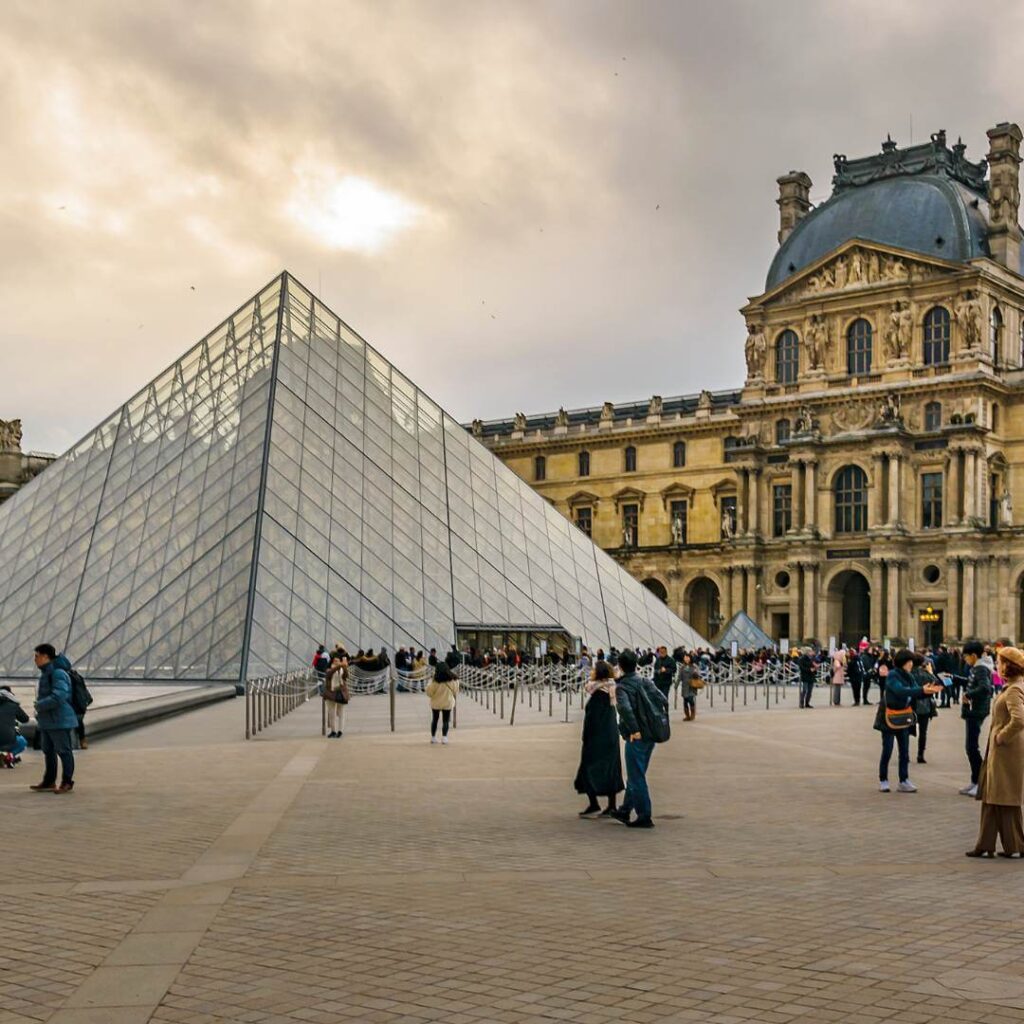
The Louvre & Tuileries Garden
At its core is the Louvre Museum, the world’s largest and most-visited art museum. Once a royal palace, it now houses masterpieces like the Mona Lisa and Venus de Milo. The crowds here can be overwhelming. A small group skip-the-line tour, late day tour, or a private tour offers a more enjoyable experience.
Just outside, the Jardin des Tuileries provides a peaceful escape. This beautifully landscaped garden is perfect for a stroll, a coffee break, or simply admiring the statues and fountains that have inspired artists for centuries.
Luxury & Shopping
This arrondissement is also a hub for luxury. The Place Vendôme, framed by grand neoclassical buildings, is home to high-end jewelry stores and the legendary Ritz Paris. Nearby, Rue Saint Honoré attracts fashion lovers with its designer boutiques and chic Parisian brands.
Cafés & Hidden Gems
For a classic Parisian treat, Angelina Paris on Rue de Rivoli is famous for its rich, velvety hot chocolate, once a favorite of Coco Chanel. Tucked between the grand avenues, charming cafés and quiet courtyards invite visitors to slow down and soak in the elegance of historic Paris.
The 1st Arrondissement is where the past meets the present. Whether exploring world-famous museums, indulging in luxury shopping, or enjoying a quiet moment in the gardens, this district is a perfect introduction to Paris.
2nd Arrondissement: A Hidden Gem
The 2nd Arrondissement is one of the smallest Paris districts, but it’s packed with history, hidden passageways, and a lively local atmosphere. Unlike the grand boulevards nearby, this neighborhood feels more intimate, offering a mix of old-world charm and modern energy.
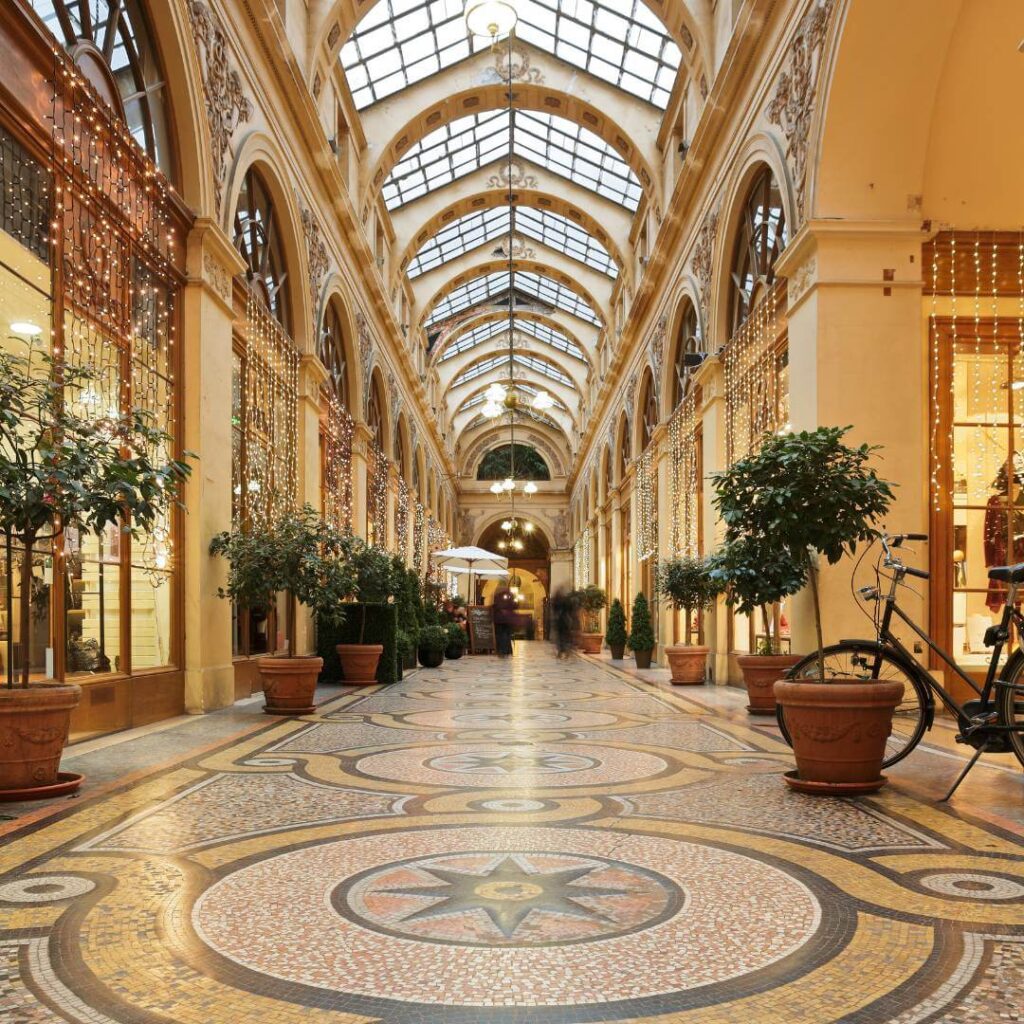
Covered Passages & Historic Streets
One of the district’s best-kept secrets is its covered passages – beautiful 19th-century shopping arcades with glass ceilings, mosaic floors, and elegant storefronts. Galerie Vivienne is a standout, with its antique bookshops, boutiques, and tea rooms that feel like a step back in time. Nearby, Passage des Panoramas, one of Paris’s oldest covered arcades, is lined with historic restaurants and specialty shops.
Markets & Local Life
The 2nd Arrondissement is also a hub for local food culture. Rue Montorgueil, a lively market street, is filled with fresh produce, traditional fromageries, and some of the best boulangeries in the city. This pedestrian-friendly area is perfect for grabbing a croissant, sipping an espresso, and experiencing everyday Parisian life.
Cultural Landmarks & Dining
The district is also home to the Opéra-Comique, one of France’s oldest musical theaters, known for its elegant performances. For a classic dining experience, Le Grand Colbert offers timeless brasserie fare in a setting that feels straight out of a movie.
Though small, the 2nd Arrondissement is full of character. It’s where historic arcades, vibrant markets, and local cafés create a neighborhood that feels both authentic and effortlessly Parisian.
3rd Arrondissement: The Artistic Heart of Paris
The 3rd Arrondissement is part of Le Marais, one of the city’s most stylish and culturally rich neighborhoods. This area blends history with creativity, where medieval streets lead to contemporary art galleries, and aristocratic mansions house world-class museums.
Museums & Art Scene
One of the district’s highlights is the Musée Picasso, located in the stunning Hôtel Salé. It holds an extensive collection of Picasso’s works, offering insight into the evolution of one of the world’s most influential artists.
Art is everywhere in the 3rd Arrondissement. Independent galleries, design studios, and creative spaces fill the neighborhood, making it one of the most vibrant areas for contemporary and experimental art in Paris.

Historic Streets & Markets
Beyond its artistic reputation, this district is home to some of the best-preserved historic architecture in the city. Hôtels Particuliers, once grand aristocratic mansions, now serve as museums, boutiques, and cultural spaces. The Carreau du Temple, a former covered market, now hosts exhibitions, performances, and creative events that attract artists from around the world.
For food lovers, the Marché des Enfants Rouges is a must-visit. As Paris’s oldest covered market, it offers an incredible mix of fresh produce and international cuisine, from French pastries to Moroccan tagines. The lively atmosphere makes it a favorite for both locals and visitors.
Culinary Experiences & Hidden Gems
Food is an art form in Paris, and learning how to make classic French pastries is an experience in itself. A small-group, chef-led pastry class offers the chance to master laminated dough techniques and enjoy freshly baked croissants and pain au chocolat with a hot drink.
For a sit-down meal, Breizh Café serves some of the best Breton crêpes in Paris, perfectly paired with crisp apple cider.
Looking for the best crêpes in Paris? Read about the 7 best crêperies in Paris here.
The 3rd Arrondissement is a neighborhood that blends old and new. It feels historic yet modern, timeless yet always evolving. It’s an essential stop for anyone wanting to experience the artistic and cultural heartbeat of Paris.
4th Arrondissement: A Blend of History and Vibrancy
The 4th Arrondissement is where medieval Paris meets modern energy. Home to the Île de la Cité and Le Marais, this district blends historic landmarks, charming streets, and a lively cultural scene.
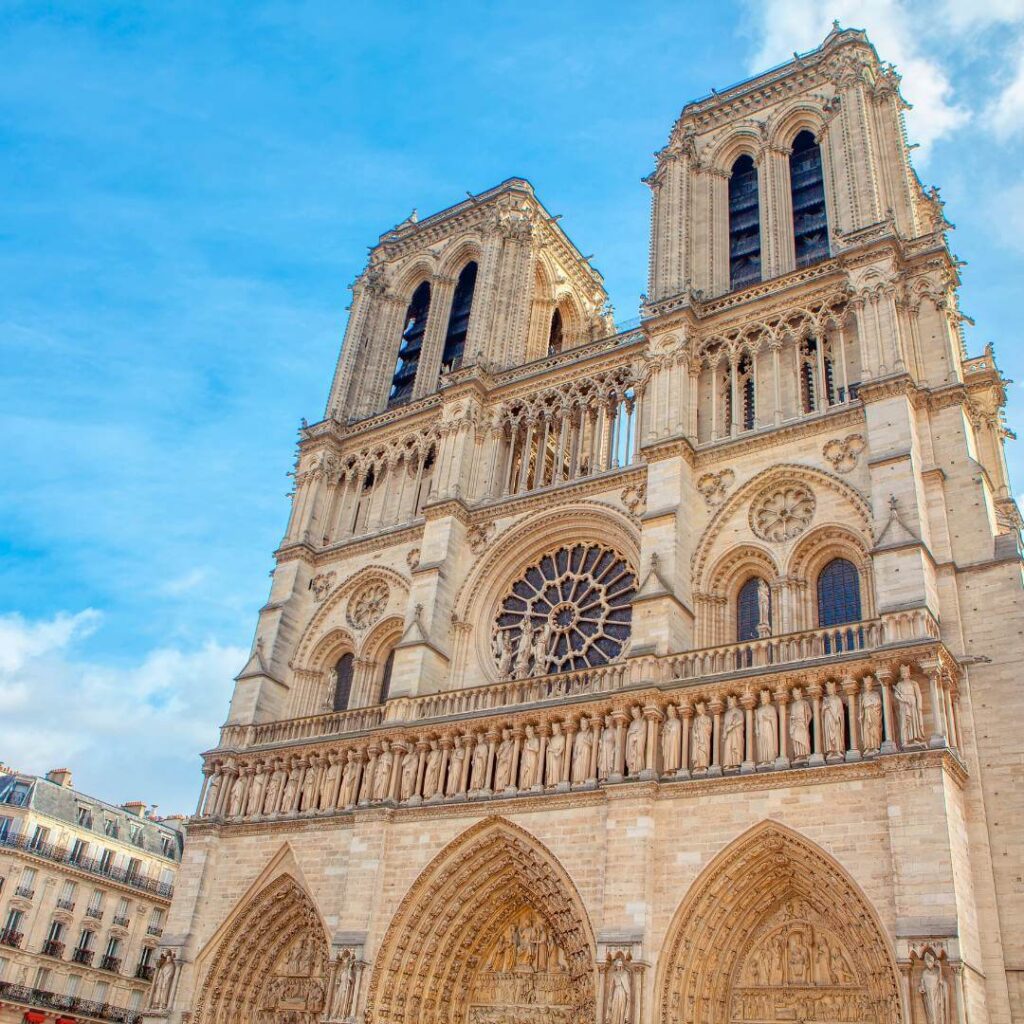
Notre Dame & Medieval Paris
At its heart stands Notre Dame Cathedral, one of the most famous symbols of Paris. This Gothic masterpiece has stood for centuries, and despite the 2019 fire, its restoration continues. Visitors can once again step inside to admire its grandeur.
Just a short walk away, Sainte-Chapelle stuns with its breathtaking stained glass windows. This hidden gem showcases medieval craftsmanship at its finest. Exploring the area with a local guide offers a deeper look into Paris’s medieval past.
The 4th Arrondissement is not just about history—it’s also a food lover’s paradise. Exploring its gastronomy offers a deeper connection to the neighborhood’s culture. For a unique perspective on the Notre Dame area, a secret food tour lets visitors experience the district through its best local flavors.
Le Marais & Place des Vosges
Beyond its historic sites, Le Marais is one of Paris’s most vibrant districts. Place des Vosges, the city’s oldest planned square, offers a quiet escape surrounded by red-brick mansions and shaded walkways. The surrounding streets are lined with art galleries, independent boutiques, and cafés, where history and modern culture blend effortlessly.
The Jewish Quarter & Food Culture
The Jewish quarter, centered around Rue des Rosiers, is a must-visit for both history buffs and food lovers. Traditional bakeries, kosher delis, and the famous L’As du Fallafel draw crowds eager to try one of Paris’s best street foods.
The 4th Arrondissement captures the essence of Paris, where medieval alleyways lead to contemporary art, and historic squares are filled with lively cafés. Whether exploring its history or indulging in its food scene, this district offers an authentic Parisian experience.
5th Arrondissement: The Intellectual and Historic Heart of Paris
The 5th Arrondissement, or Latin Quarter, is one of the oldest parts of the city. Known for its universities, historic landmarks, and vibrant student life, it’s a place where Paris’s academic and cultural heritage shine.

The Sorbonne & Literary Paris
At its center is Sorbonne University, one of the world’s most prestigious institutions. Its presence fills the Latin Quarter with bookstores, cozy cafés, and an intellectual energy that has defined the district for centuries.
A visit to Shakespeare and Company is a must for literature lovers. This historic bookstore has welcomed writers and poets since the early 20th century, and its charming, book-filled interior remains a haven for readers.
Landmarks & Ancient History
The Panthéon, a grand Neoclassical monument, serves as the final resting place for notable figures like Voltaire, Rousseau, and Marie Curie. Just a short walk away, the Arènes de Lutèce, an ancient Roman amphitheater, offers a rare glimpse into Paris’s distant past.
Markets & Dining
For food lovers, Rue Mouffetard is one of the best streets in the city. Lined with markets, fromageries, and traditional cafés, it’s the perfect place to experience everyday Parisian life. A meal at Le Coupe Chou, a historic restaurant tucked into a 17th-century building, offers a cozy and refined dining experience.
A Green Escape
For a break from the lively streets, Jardin des Plantes provides a peaceful retreat. As Paris’s main botanical garden, it features beautifully landscaped paths, historic greenhouses, and the National Museum of Natural History.
With its mix of history, academia, and vibrant culture, the 5th Arrondissement embodies the intellectual spirit of Paris.
6th Arrondissement: Classic Parisian Elegance
The 6th Arrondissement is Paris at its most refined. Home to Saint Germain des Prés and the Luxembourg Gardens, this district has long been a hub for artists, writers, and intellectuals.
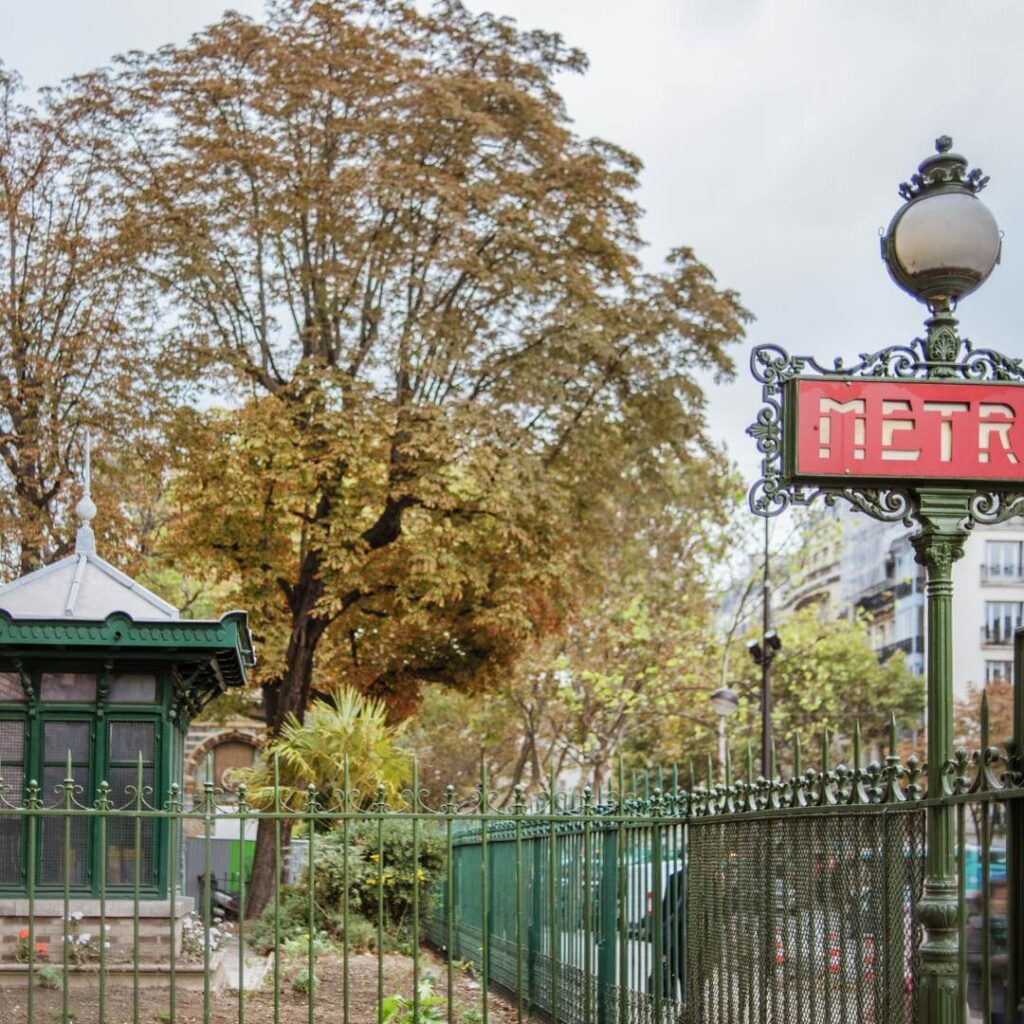
Saint Germain des Prés & Literary Icons
Few places hold as much literary and artistic history as Saint Germain des Prés. Once the heart of the city’s intellectual scene, it attracted figures like Jean-Paul Sartre, Simone de Beauvoir, and Ernest Hemingway.
Legendary cafés such as Les Deux Magots and Café de Flore still buzz with conversation. Once gathering spots for philosophers and writers, today they remain iconic places to enjoy a coffee and people-watch. The area is also lined with independent bookstores, antique shops, and designer boutiques, keeping its artistic spirit alive.
Paris lights up each night and there’s no better view than the Saint Germain neighborhood. Explore the bohemian cafes, jazz clubs, narrow cobblestone streets and medieval churches on a private Paris by Night tour of the Left Bank.
The Luxembourg Gardens
One of Paris’s most beautiful green spaces, the Luxembourg Gardens offers a peaceful retreat in the heart of the city. Tree-lined promenades, grand fountains, and its famous green chairs invite visitors to linger. Overlooking the gardens, the Luxembourg Palace stands as a reminder of Paris’s royal past.
Dining & Sweet Treats
The 6th Arrondissement is also known for its excellent dining. Brasserie Lipp, a historic restaurant, serves classic Alsatian dishes in an old-world setting. For something sweet, Pierre Hermé offers some of the best macarons in Paris, known for their bold flavors and perfect texture.
With its mix of literary history, elegant gardens, and stylish cafés, the 6th Arrondissement embodies the sophistication of Paris. Whether strolling its streets or relaxing in its gardens, this district offers a classic Parisian experience.
7th Arrondissement: Elegance and Iconic Landmarks
The 7th Arrondissement is Paris at its most refined. Home to some of the city’s most famous landmarks, this district blends history, culture, and grandeur.
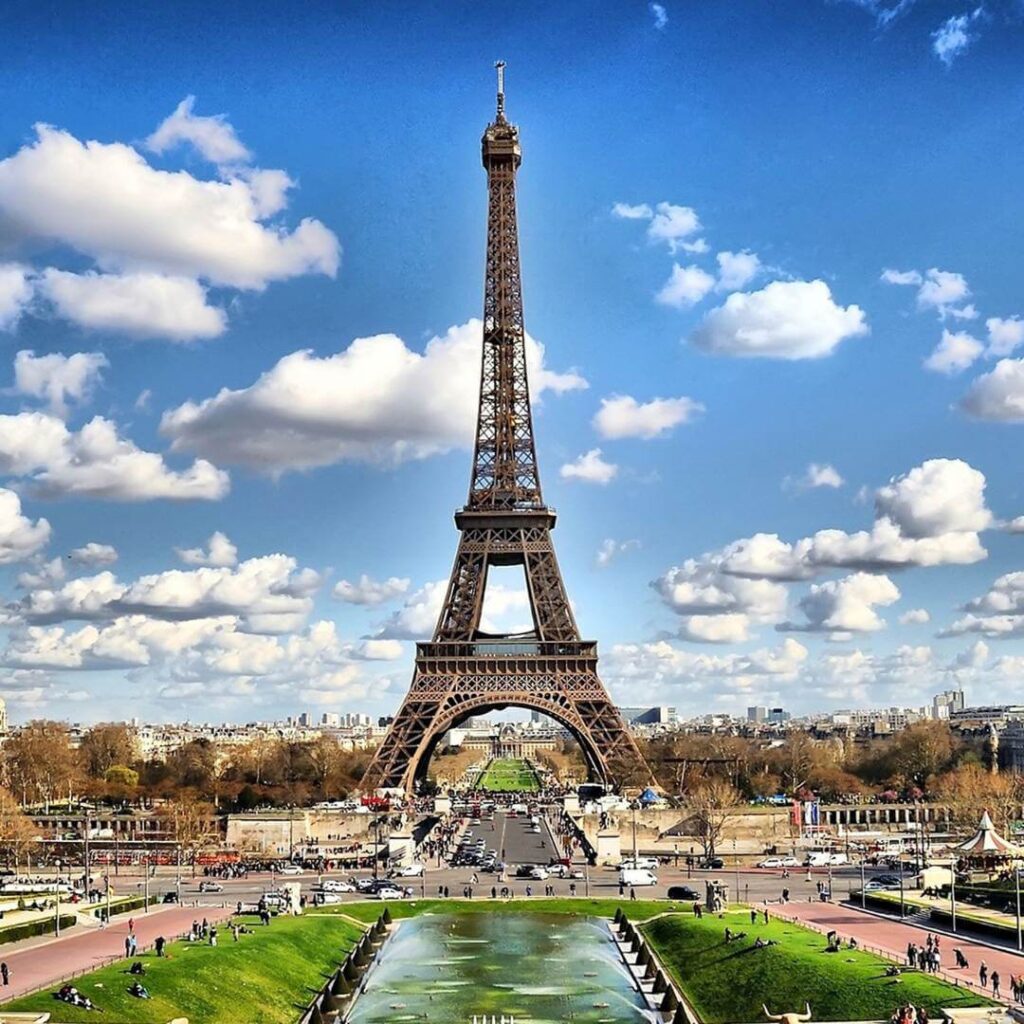
The Eiffel Tower & Champ de Mars
At its heart stands the Eiffel Tower, one of the most recognizable landmarks in the world. Visitors can climb to the top for panoramic views or enjoy a picnic in the Champ de Mars, the sprawling park at its base. For a different perspective, a Seine River cruise with lunch or dinner offers a stunning view of the tower as it lights up at night.
World-Class Museums
Beyond the Eiffel Tower, the 7th Arrondissement is rich in culture. The Musée d’Orsay, housed in a former railway station, features one of the world’s best collections of Impressionist art. Booking a skip-the-line highlight tour helps visitors make the most of their time, while private tours offer deeper insights into both the museum and Montmartre’s artistic history.
A short walk away, the Musée Rodin showcases the sculptor’s masterpieces, including The Thinker, displayed in a peaceful garden setting.
Historic Landmarks & Institutions
The district also holds deep historical significance. The Les Invalides complex, with its golden dome, houses Napoleon Bonaparte’s tomb and several military museums. Nearby, the UNESCO headquarters adds an international dimension to the arrondissement’s prestige.
Dining & Market Streets
For food lovers, Rue Cler is a must-visit. This lively market street is lined with bakeries, cafés, and specialty food shops, perfect for gathering picnic essentials. For a more refined meal, Le Café de l’Esplanade serves elegant French cuisine with views of Les Invalides.
With its iconic landmarks, cultural institutions, and charming streets, the 7th Arrondissement embodies the splendor of Paris.
8th Arrondissement: Luxury and Grandeur
The 8th Arrondissement is where Parisian elegance and prestige take center stage. Known for the Champs-Élysées, grand monuments, and high-end shopping, this district is synonymous with luxury.
The Champs-Élysées & Arc de Triomphe
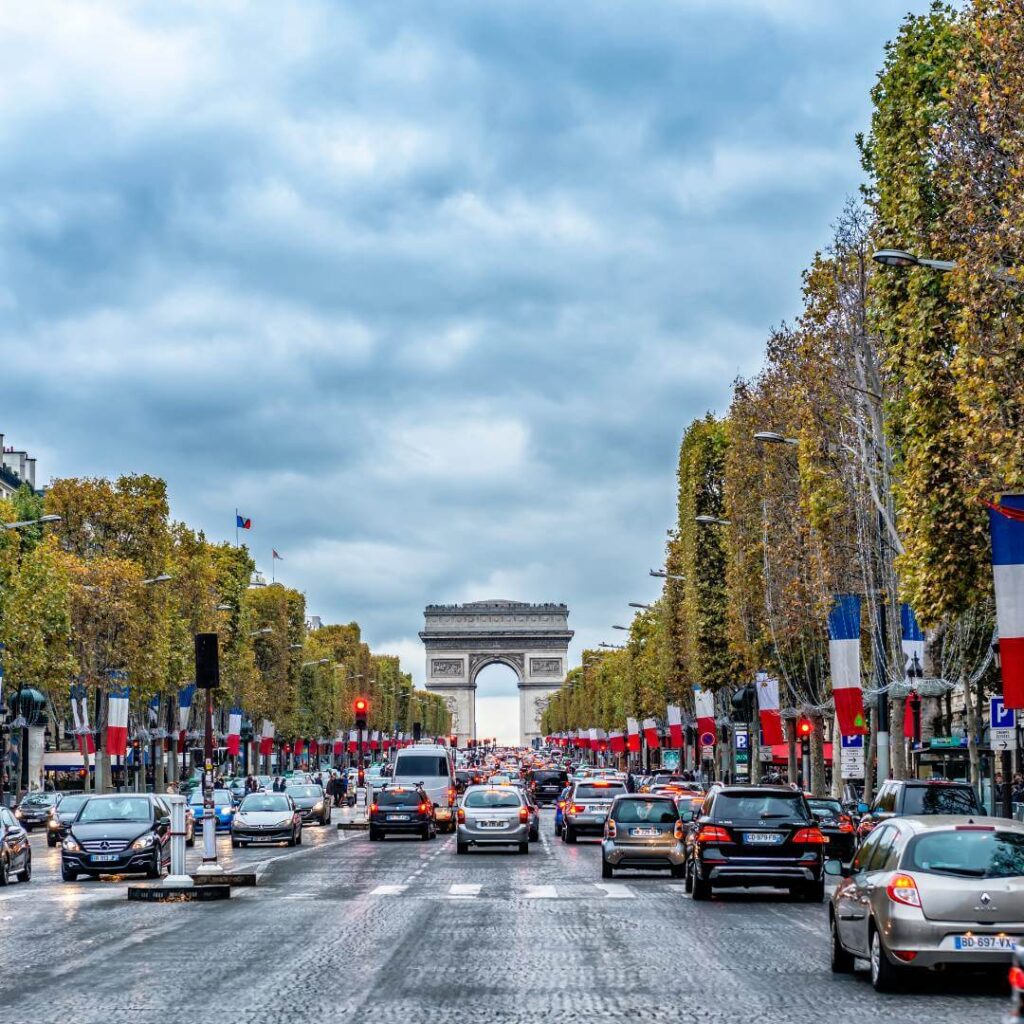
Often called the most beautiful avenue in the world, the Champs-Élysées stretches from Place de la Concorde to the Arc de Triomphe. Lined with luxury boutiques, cafés, and theaters, it offers a quintessential Parisian experience.
At its western end, the Arc de Triomphe, commissioned by Napoleon, honors those who fought for France. Visitors can climb to the top for sweeping views of the city.
Cultural Landmarks & Museums
History and culture are central to the 8th Arrondissement. Place de la Concorde, once the site of the French Revolution’s guillotine, is now a grand public square. Nearby, the Grand Palais and Petit Palais, with their Beaux-Arts architecture, host art exhibitions, performances, and cultural events year-round.
Luxury Shopping & Fine Dining
This district is a dream for shoppers. The Rue du Faubourg Saint-Honoré and Avenue Montaigne are lined with flagship stores of the world’s top fashion houses. From Chanel to Louis Vuitton, this is Paris’s high-fashion hub.
Dining here is equally refined. The Four Seasons Hotel hosts Le Cinq, a Michelin-starred restaurant offering an unforgettable fine-dining experience. For a quieter escape, Parc Monceau provides a peaceful retreat surrounded by elegant mansions, sculptures, and a Renaissance arch.
With its mix of history, culture, and luxury, the 8th Arrondissement is where Paris shines at its most glamorous.
9th Arrondissement: A Fusion of Culture and Style
The 9th Arrondissement blends historic grandeur, artistic energy, and a vibrant local scene. From the Palais Garnier to the trendy streets of South Pigalle, this district showcases the city’s evolving charm.
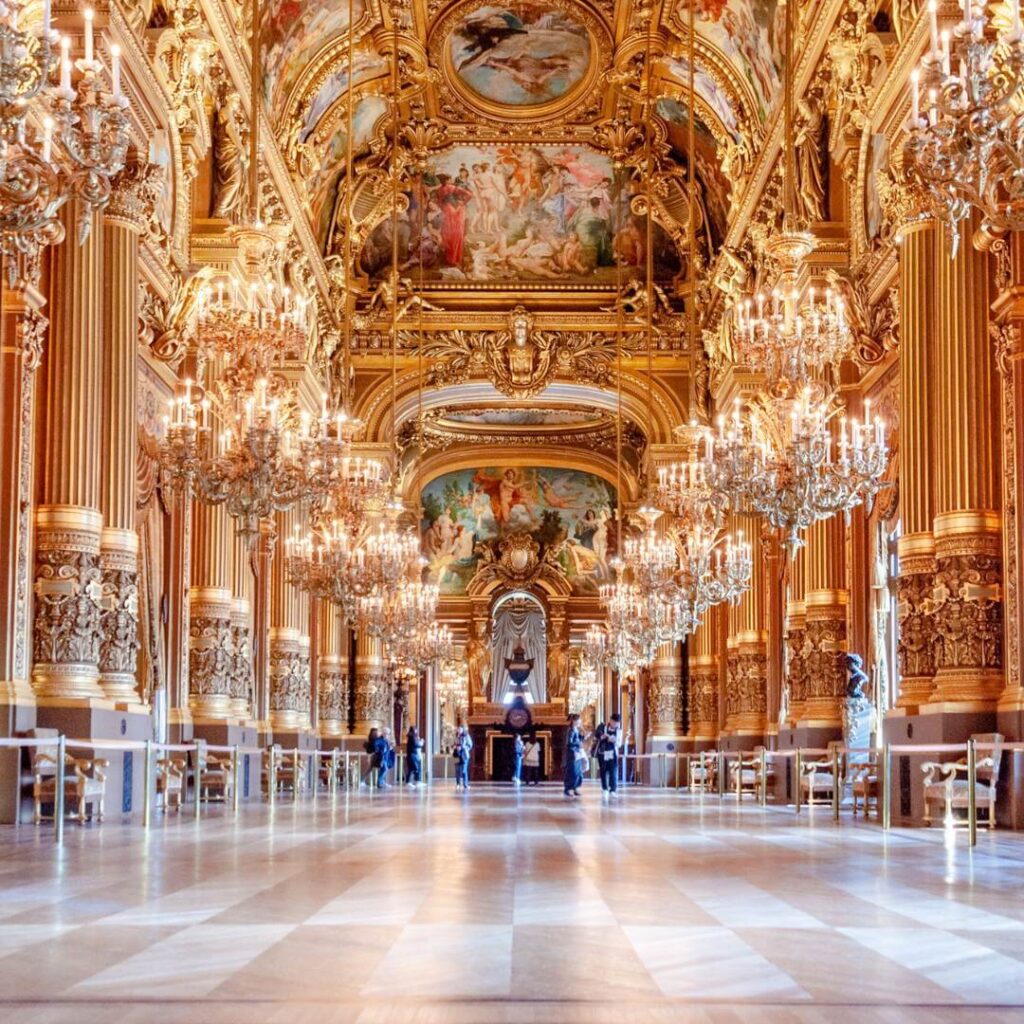
Palais Garnier & Theaters
At its heart stands Palais Garnier, one of the world’s most opulent opera houses. This Beaux-Arts masterpiece, with its gold detailing, grand staircases, and Chagall-painted ceiling, has inspired legends—including The Phantom of the Opera. Visitors can tour its lavish halls or attend a ballet or opera performance for a truly unforgettable evening.
Shopping & Grand Boulevards
Beyond the opera house, the Grands Boulevards lead into one of Paris’s best shopping districts. Boulevard Haussmann is home to the city’s legendary Galeries Lafayette and Printemps department stores. These shopping destinations combine luxury fashion, gourmet food, and stunning glass-domed architecture, making them attractions in their own right.
The Trendy Side of the 9th: South Pigalle & SoPi
The 9th Arrondissement isn’t just about elegance—it also has a trendy, artistic edge. Once a red-light district, South Pigalle (SoPi) has transformed into one of Paris’s coolest neighborhoods. The area is packed with hip cafés, craft cocktail bars, and independent boutiques, drawing a younger, creative crowd.
Nearby, Rue des Martyrs, a bustling market street, is lined with artisanal food shops, bakeries, and cafés. It’s the perfect place for a morning coffee and fresh pastries while experiencing the rhythm of everyday Parisian life.
The 9th Arrondissement offers something for every traveler. Whether exploring historic theaters, indulging in high-end shopping, or discovering Paris’s trendiest cafés, this district is a perfect mix of culture and style.
10th Arrondissement: Canal-Side Charm and Urban Energy
The 10th Arrondissement is where old Paris meets modern creativity. Known for its scenic canals, vibrant nightlife, and diverse influences, this district offers a glimpse into local life beyond the typical tourist paths.

Canal Saint-Martin: The Heart of the 10th
At the center of the district, Canal Saint-Martin is a favorite spot for Parisians. Its iron footbridges, tree-lined quays, and relaxed atmosphere make it a go-to for afternoon picnics, evening drinks, and casual strolls. Small boutiques, bistros, and cafés along the canal add to its bohemian charm.
Train Stations & Cultural Shifts
The 10th Arrondissement is also a major transport hub, home to Gare du Nord and Gare de l’Est, two of the city’s busiest train stations. These stations connect Paris to other major European cities, making this district a true gateway. Just steps away, however, the atmosphere shifts. Hidden courtyards, emerging food scenes, and lively cultural spaces create a more intimate and creative side of the city.
Dining & Nightlife Hotspots
The 10th Arrondissement has become one of Paris’s trendiest dining destinations. South of the canal, Rue de Paradis and Rue Sainte-Marthe are lined with trendy restaurants and cocktail bars. The mix of international flavors, creative bistros, and natural wine bars attracts locals, artists, and young professionals looking for something beyond the traditional Parisian brasserie.
Markets & Multicultural Influences
Despite its modern energy, the 10th Arrondissement retains deep cultural roots. Passage Brady, known as “Little India,” is a covered arcade filled with Indian and Pakistani restaurants, spice shops, and specialty markets. Nearby, the Saint-Quentin and Saint-Martin markets, housed in wrought-iron halls, offer fresh produce, artisan cheeses, and local goods, bringing a classic Parisian feel to the district.
The 10th Arrondissement is a district in constant evolution. Whether you’re strolling along the canal, tasting global flavors, or discovering hidden gems, this neighborhood offers a fresh perspective on Paris.
11th Arrondissement: A Local’s Paris
The 11th Arrondissement is where Paris comes alive. Known for its artistic energy, vibrant nightlife, and revolutionary history, this district offers an authentic look at Parisian life.
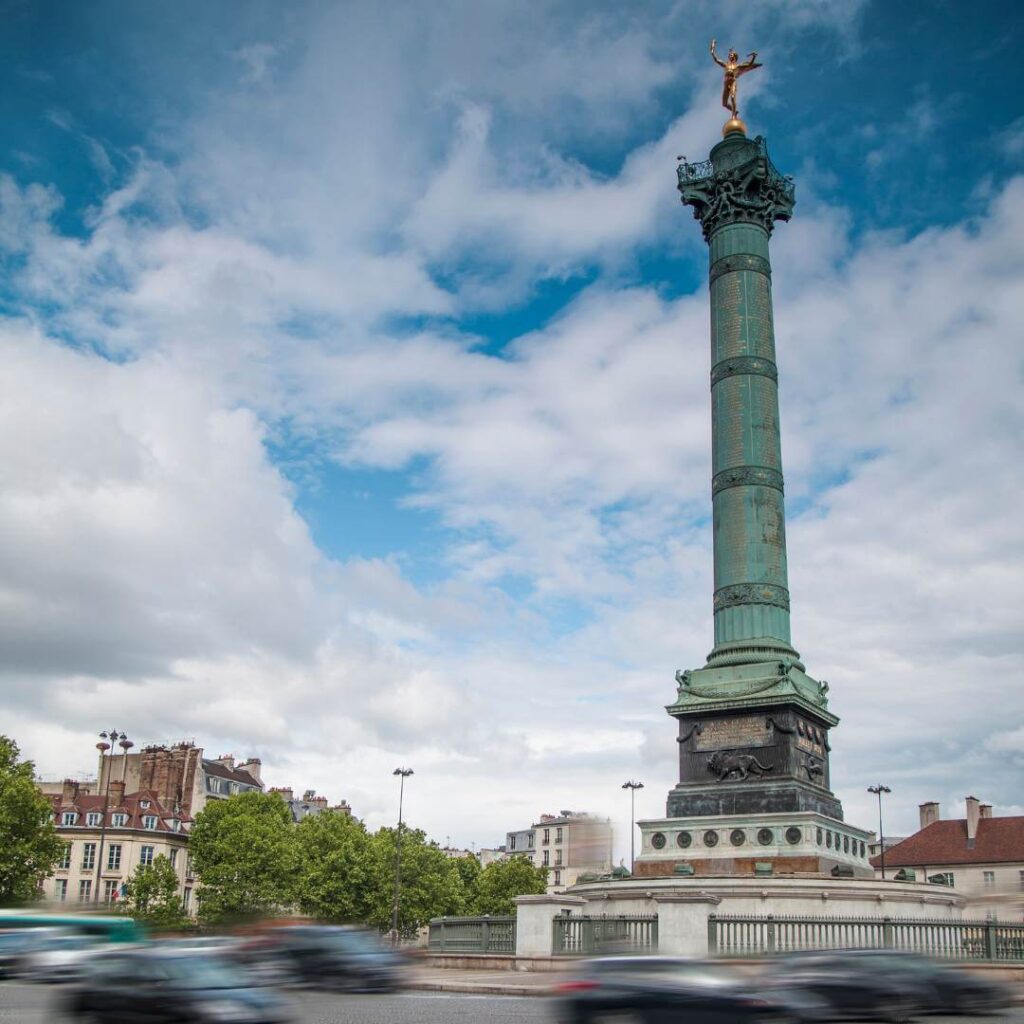
Place de la Bastille: A Historic Symbol
At its heart lies Place de la Bastille, a powerful symbol of the French Revolution. While the prison itself no longer stands, the square remains a gathering place for protests, concerts, and cultural events. Nearby, the Opéra Bastille, a modern performance venue, hosts world-class opera and ballet throughout the year.
A Neighborhood for Locals
Unlike more tourist-heavy areas, the 11th Arrondissement is a place where Parisians live, work, and socialize. The district is filled with small family-run cafés, independent boutiques, and bistros catering to locals rather than visitors. This means great food, excellent wine, and a true Parisian atmosphere—without the crowds.
A Hub for Art & Creativity
The 11th Arrondissement has long been a center for artists, musicians, and creatives. Atelier des Lumières, a former foundry, now hosts immersive digital art exhibits that bring famous paintings to life through light and sound. Throughout the district, galleries, artist studios, and live music venues showcase both established and emerging talent.
Nightlife & Social Scene
For those looking to experience Paris after dark, Rue Oberkampf and its surrounding streets offer one of the city’s best nightlife scenes. The area is packed with bars, music clubs, and late-night cafés, offering everything from craft cocktails to live jazz. The casual, energetic vibe makes it a great spot to mix with locals and experience the social side of Paris.
The 11th Arrondissement is best explored without an agenda. Wander, discover, and let the neighborhood’s energy guide you. Whether you’re enjoying a quiet coffee in a corner café or dancing at a late-night club, this is where the city truly comes to life.
12th Arrondissement: Green Spaces and Hidden Treasures
The 12th Arrondissement is one of Paris’s most underrated districts. Stretching from Place de la Bastille to the city’s eastern edge, it offers a blend of history, modern renewal, and expansive green spaces.
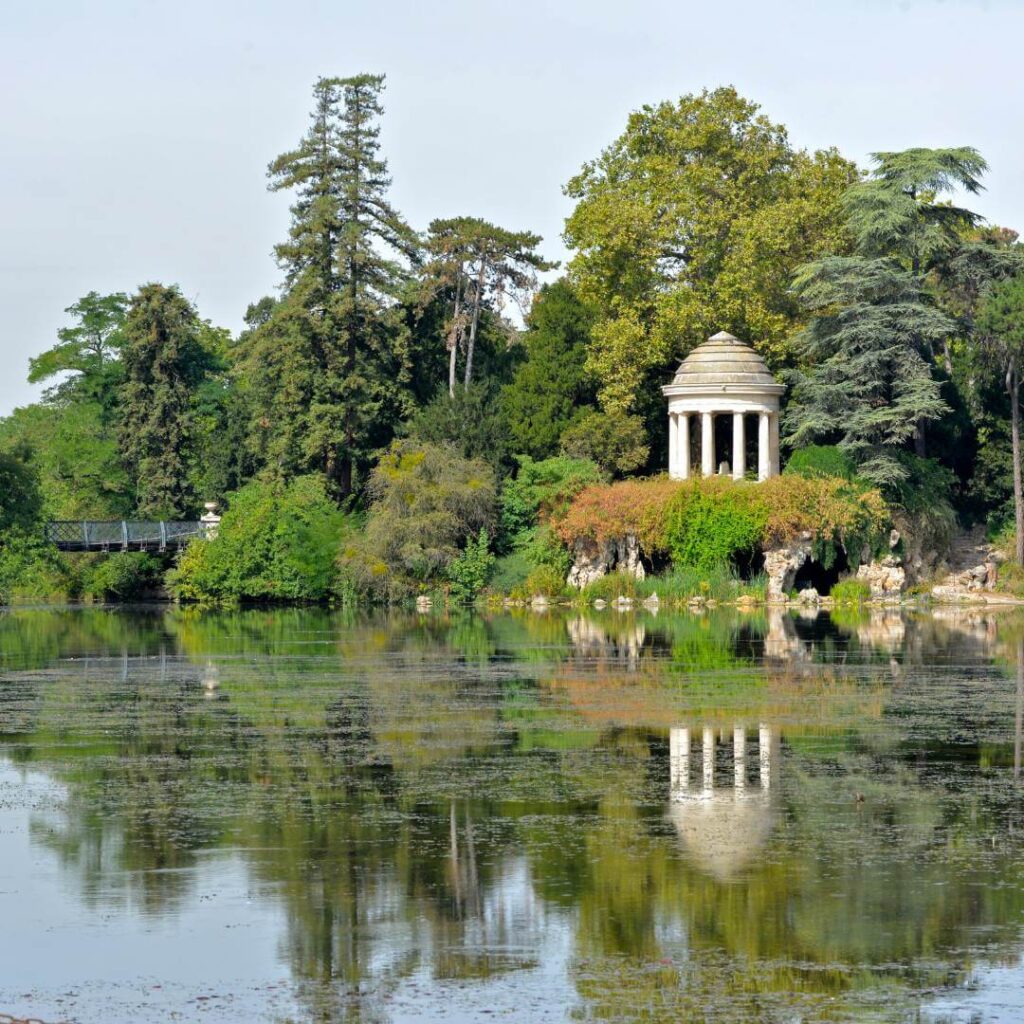
Bois de Vincennes: Paris’s Largest Park
One of the district’s greatest treasures is the Bois de Vincennes, the largest park in Paris. This sprawling green space is perfect for long walks, picnics, and outdoor activities. Within the park, the Château de Vincennes, a medieval fortress, stands as a reminder of the city’s royal past. The park also features botanical gardens, scenic lakes, and wooded trails, offering a peaceful retreat from city life.
Promenade Plantée & Viaduc des Arts
The Promenade Plantée, an elevated garden walkway, winds through the 12th Arrondissement, offering unique views of rooftops and hidden courtyards. Originally built on an old railway viaduct, it inspired New York City’s High Line and remains a hidden gem for those seeking a quiet stroll.
Below, the Viaduc des Arts hosts artisan workshops, galleries, and craft studios, showcasing the neighborhood’s creative energy. It’s the perfect spot to browse handmade goods and discover local artists.
Markets & Cultural Landmarks
The Opéra Bastille, a modern opera house, anchors the district’s cultural scene. It hosts a mix of classical and contemporary productions, making it a must-visit for performance lovers.
For food enthusiasts, the Marché d’Aligre is one of Paris’s best open-air markets. Bustling stalls overflow with fresh produce, artisan cheeses, and gourmet specialties, while nearby bistros offer a lively setting to enjoy local flavors. Private market tours provide an immersive experience, and family-friendly tours make it fun for all ages.
A Different Rhythm of Paris
The 12th Arrondissement offers a quieter, greener, and more laid-back side of Paris. Whether wandering hidden gardens, savoring fresh market finds, or exploring its artistic spaces, this district invites visitors to experience the city at a different pace.
13th Arrondissement: A Different Side of Paris
The 13th Arrondissement is unlike any other part of Paris. Known for its modern architecture, thriving Asian community, and bold street art, this district offers a fresh and unexpected perspective on the city.
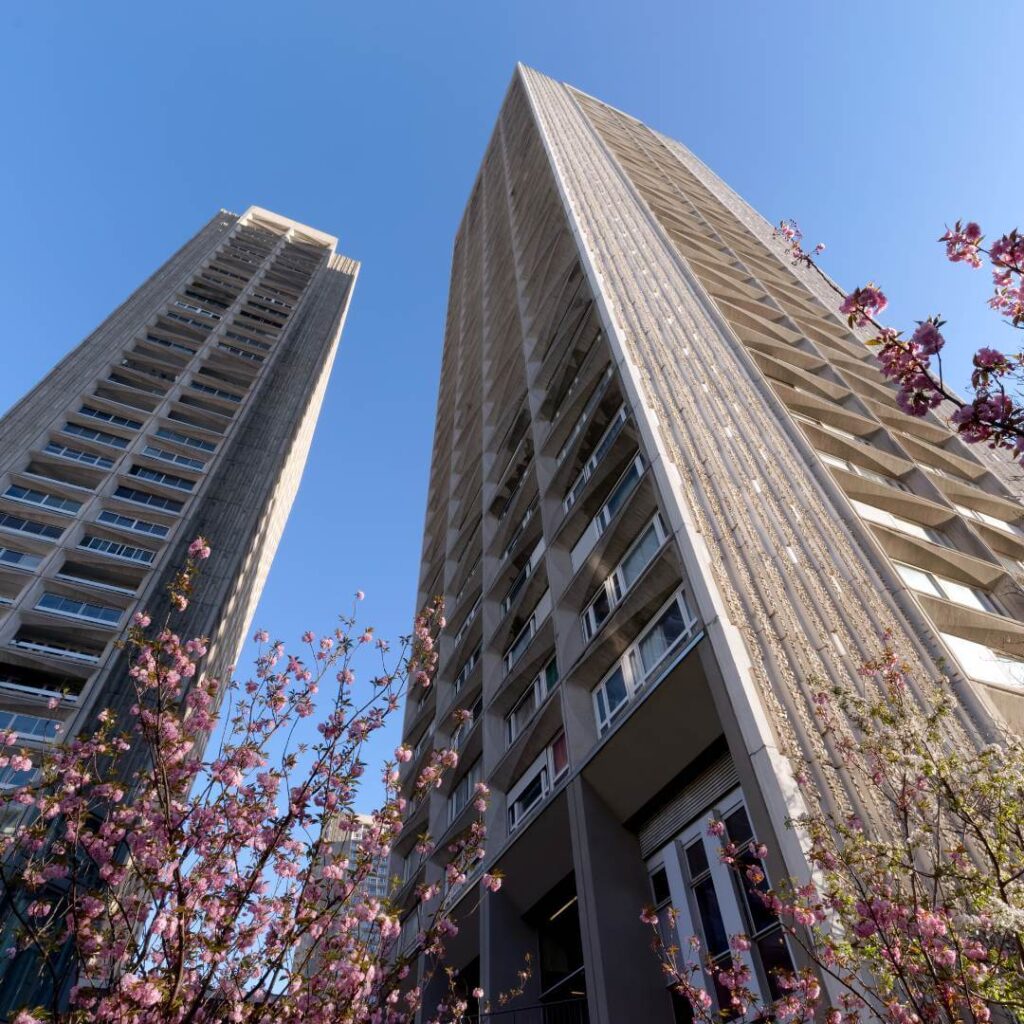
Paris’s Chinatown: A Cultural Hub
The area around Avenue de Choisy and Avenue d’Ivry is the heart of Paris’s Chinatown. Here, bustling supermarkets, dim sum restaurants, and specialty tea shops bring the flavors of China, Vietnam, and Thailand to the city.
The annual Chinese New Year Parade is a highlight, filling the streets with dragon dances, live music, and vibrant festivities. It’s a celebration of cultural heritage that brings the community together.
Street Art & Urban Creativity
The 13th Arrondissement is a canvas for some of the world’s top street artists. Massive murals transform building facades into works of art, making this district feel like an open-air gallery. Walking through its streets is an experience in itself, with colorful, large-scale pieces stretching across entire city blocks.
Modern Landmarks & Riverside Walks
The district is also home to one of its most striking landmarks: Bibliothèque Nationale de France (BNF). This modern glass library, designed to resemble four open books, is a symbol of the arrondissement’s contemporary transformation.
Along the nearby Seine River, scenic promenades provide peaceful views of the city’s evolving skyline, offering a contrast to the historic sights of central Paris.
Food & Dining Scene
The 13th Arrondissement is a dream for food lovers. The streets are lined with authentic dumpling houses, Vietnamese pho spots, and Japanese ramen shops, serving some of the best Asian cuisine in Paris.
Beyond its Asian influences, the district has a growing café culture and an emerging dining scene, making it an exciting place to explore different flavors and culinary styles.
A Neighborhood of Contrasts
The 13th Arrondissement feels worlds away from the classic postcard image of Paris—but that’s exactly what makes it special. It’s a district where modernity meets tradition, and where different cultures blend to create something uniquely Parisian.
14th Arrondissement: A Bohemian Past and Quiet Charm
The 14th Arrondissement offers a peaceful, artistic, and historic side of Paris. Once a hub for bohemian creatives, it now blends relaxed neighborhoods, cultural landmarks, and green spaces, making it a perfect escape from the city’s bustle.
Montparnasse: The Heart of Paris’s Bohemian Past
In the early 20th century, Montparnasse was the center of Paris’s artistic and literary scene. Writers like Hemingway, Picasso, and Fitzgerald gathered in its cafés and brasseries, exchanging ideas over long conversations.
Today, La Coupole and Le Dôme, two legendary spots, still welcome locals and visitors, preserving the neighborhood’s creative legacy. The area remains a great place to soak in the atmosphere of old Paris.
Parks & Green Spaces
For nature lovers, Parc Montsouris is one of the arrondissement’s highlights. With rolling lawns, a tranquil lake, and tree-lined paths, it’s perfect for a relaxing walk, a morning jog, or a family picnic. This park offers a quiet escape from the city’s fast pace, making it a favorite among locals.
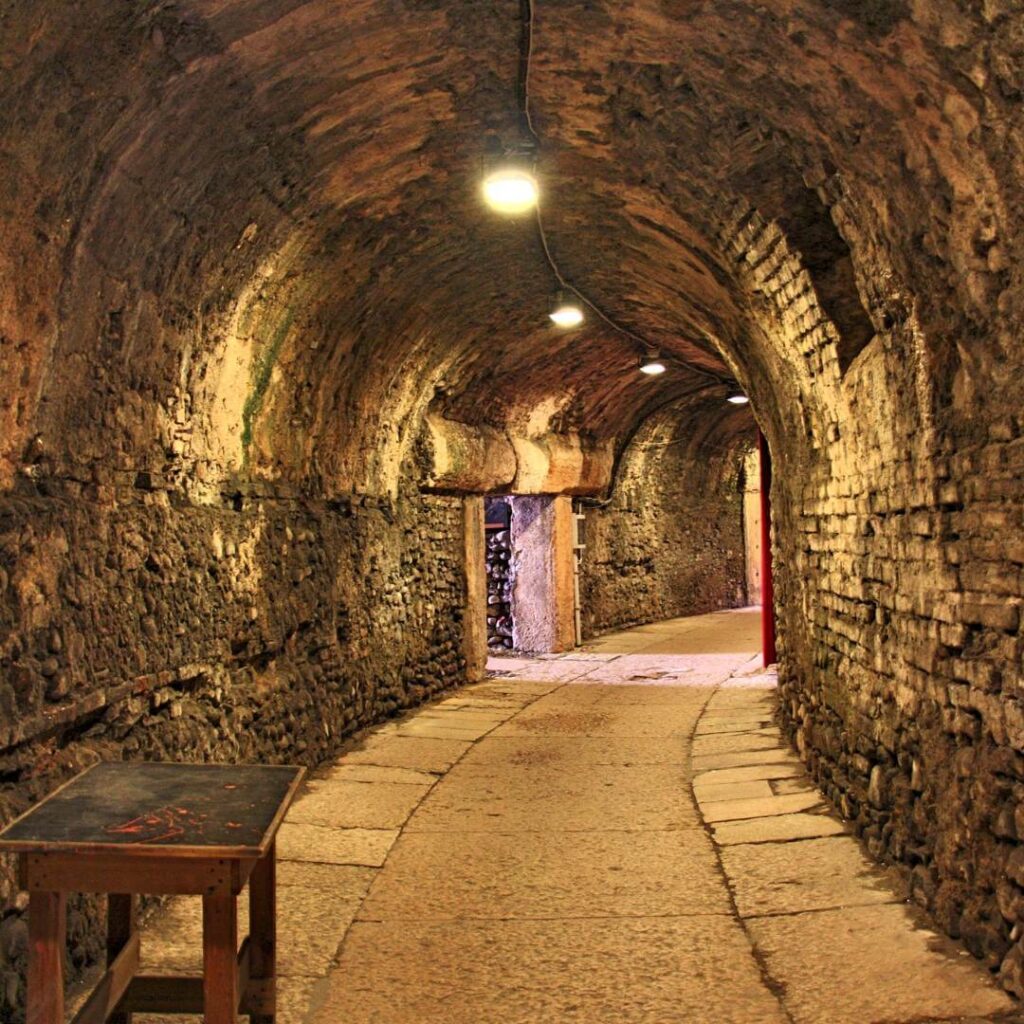
The Catacombs of Paris: A Haunting Underground World
One of the most unusual attractions in Paris lies beneath the 14th Arrondissement: the Catacombs of Paris. This underground ossuary holds the remains of millions of Parisians, arranged in intricate, eerie formations. Visitors can take a guided tour through its tunnels, experiencing a haunting yet fascinating look at the city’s past.
Fondation Cartier: A Modern Art Hub
Adding a contemporary edge to the district, the Fondation Cartier pour l’Art Contemporain is housed in a striking glass building. This museum showcases bold contemporary art, photography, and cultural exhibitions, keeping the arrondissement’s artistic spirit alive.
A Different Side of Paris
The 14th Arrondissement is perfect for those who want to step away from the crowds and experience a more local, artistic, and peaceful Paris. Whether wandering historic streets, relaxing in green spaces, or exploring modern art, this district offers a unique and deeply connected look at the city’s past and present.
15th Arrondissement: A Modern and Relaxed Paris
The 15th Arrondissement offers a residential, contemporary side of Paris. With modern architecture, open spaces, and local markets, it’s a district where Parisians live, work, and unwind.
Parc André Citroën: Green Space with a View
Built on a former car factory site, Parc André Citroën is a vast green retreat in the city. Its open lawns, themed gardens, and futuristic greenhouse attract families, joggers, and nature lovers. A hot air balloon ride from the park offers a unique aerial view of Paris, making it a standout experience.
Beaugrenelle: Shopping with a Modern Edge
For a contemporary shopping experience, the Beaugrenelle Shopping Center offers a sleek alternative to the historic shopping streets of central Paris. This modern complex features international brands, restaurants, and a cinema, making it a convenient stop for shopping and entertainment.
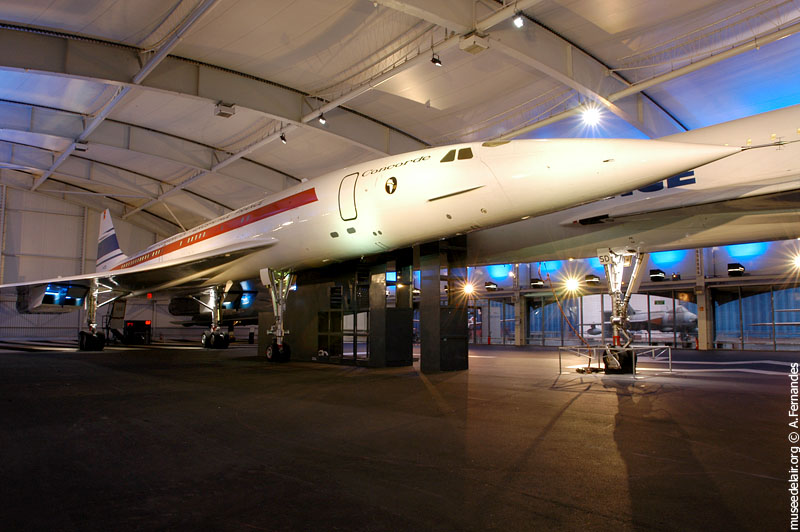
Aviation & Science Enthusiasts
The 15th Arrondissement is also home to one of the world’s oldest aviation museums. The Musée de l’Air et de l’Espace, located at Paris-Le Bourget Airport, showcases historic aircraft, space exhibits, and the first Concorde prototype. It’s a must-visit for aviation and technology enthusiasts.
Local Dining & Markets
For a taste of everyday Paris, Rue du Commerce is lined with bakeries, cafés, and small boutiques. Unlike the tourist-heavy districts, this area caters to locals, offering a more authentic dining and shopping experience.
A Different Side of Paris
The 15th Arrondissement provides a refreshing contrast to the city’s historic core. With its modern development, green spaces, and laid-back charm, it’s a great place to experience local life away from the crowds.
16th Arrondissement: Sophistication and Green Spaces
The 16th Arrondissement is one of Paris’s most elegant districts. Known for its upscale neighborhoods, prestigious museums, and vast parks, it offers a refined, peaceful Parisian experience.
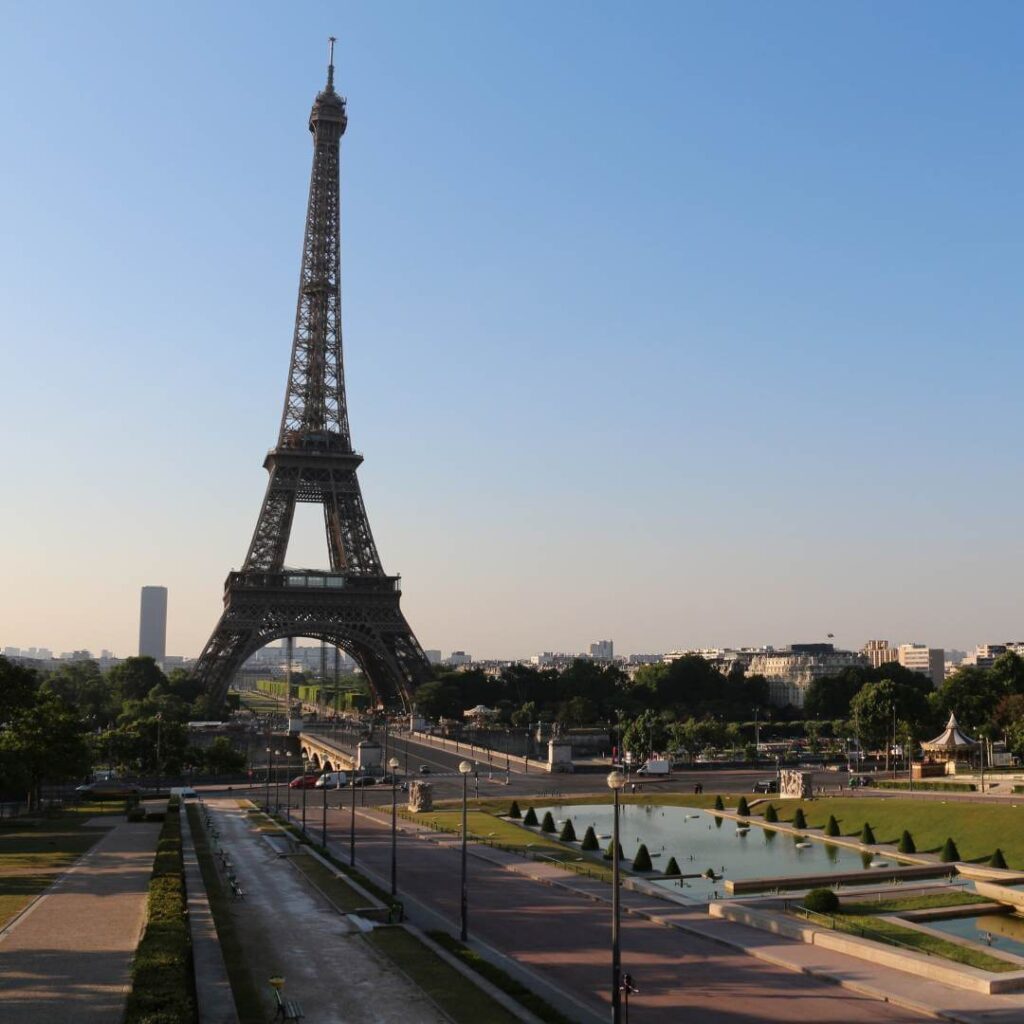
Trocadéro: The Best Eiffel Tower Views
For one of the best views of the Eiffel Tower, head to Trocadéro. This elevated square provides stunning panoramic views, especially at sunrise or sunset. Nearby, the Palais de Chaillot houses several museums, including the Musée de l’Homme and the Cité de l’Architecture et du Patrimoine, making this area a cultural hotspot.
Bois de Boulogne: Paris’s Largest Green Space
For a break from the city’s energy, Bois de Boulogne offers a vast retreat twice the size of Central Park. With lakes, walking trails, and picnic spots, it’s perfect for nature lovers. The Jardin d’Acclimatation, a family-friendly amusement park, and the Fondation Louis Vuitton, a striking glass building featuring contemporary art, add to the park’s appeal.
Art & Culture
Art lovers should visit the Marmottan Monet Museum, home to the largest collection of Monet’s works. This small, intimate museum offers a less crowded way to enjoy the artist’s masterpieces.
Fine Dining & Elegant Living
Dining in the 16th Arrondissement is as refined as its surroundings. From Michelin-starred restaurants to elegant bistros, the area is known for high-quality dining. Whether enjoying a leisurely meal with a view or exploring its world-class museums, visitors here experience Paris at its most sophisticated.
17th Arrondissement: Classic Paris with a Modern Twist
The 17th Arrondissement offers a blend of old and new Paris. From the bustling streets near the Arc de Triomphe to the charming Batignolles neighborhood, this district combines classic elegance with a growing creative scene.
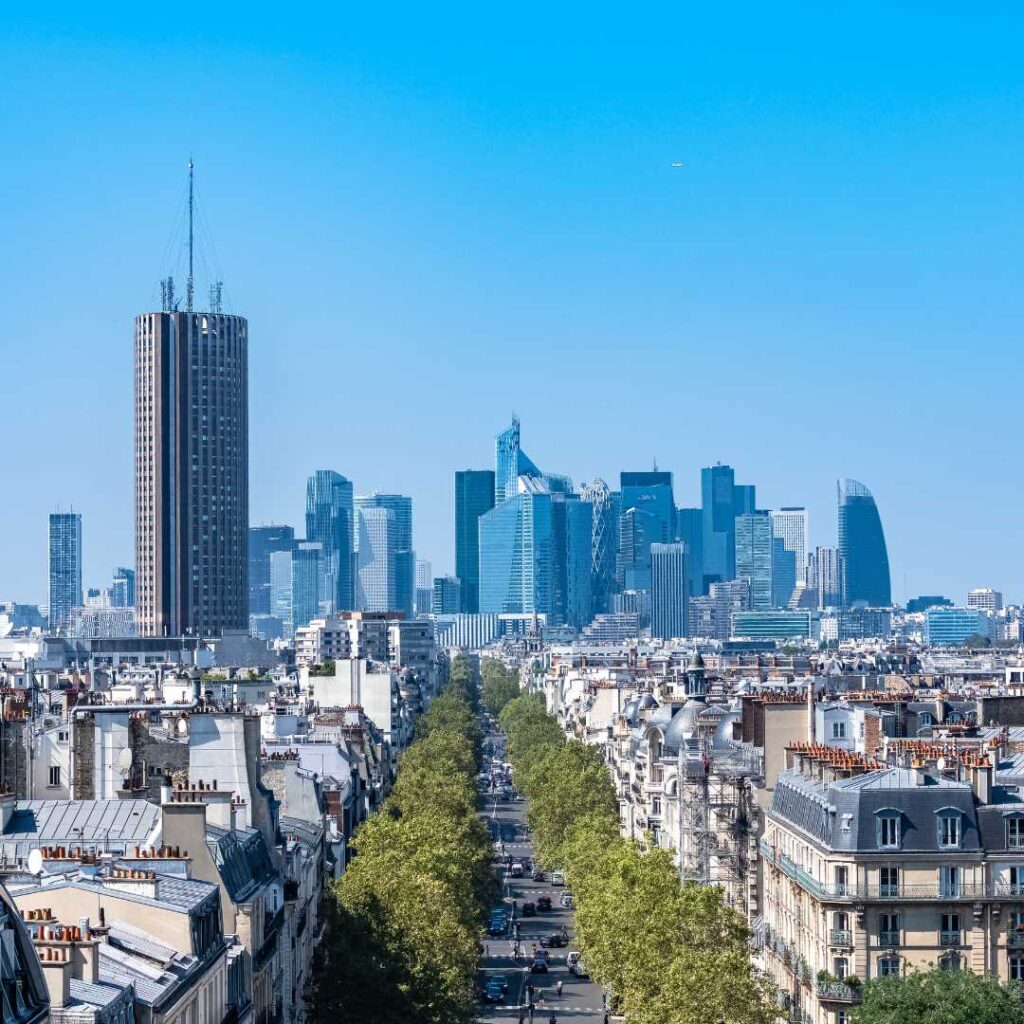
Avenue des Ternes & Classic Parisian Charm
Near the Arc de Triomphe, Avenue des Ternes is lined with cafés, bakeries, and local shops. With its wide boulevards and grand apartment buildings, this area embodies postcard-perfect Parisian charm.
Batignolles: A Bohemian, Trendy Neighborhood
Further into the arrondissement, Batignolles offers a relaxed, bohemian vibe. Once overlooked, this area has become popular with young professionals and families. Organic markets, independent boutiques, and hip cafés give the neighborhood a trendy, local feel.
The Square des Batignolles, a beautiful English-style garden, adds to the area’s community-oriented atmosphere.
Local Markets & Everyday Paris
Unlike the more touristy parts of the city, the 17th Arrondissement provides a genuine local experience. The Marché Poncelet and Marché des Batignolles offer fresh produce, gourmet cheeses, and artisan goods. Here, you can start the morning with coffee at a corner café, shop for ingredients at the market, and end the day with wine at a quiet bistro.
A Creative & Evolving District
The arrondissement also has a thriving arts scene, with small galleries and independent theaters showcasing local artists and performers. This creative energy blends seamlessly with the district’s classic Parisian charm, making it a unique place to explore.
A Taste of Everyday Paris
The 17th Arrondissement is perfect for those wanting to experience authentic Paris. Whether strolling elegant avenues, discovering hidden cafés, or relaxing in its leafy parks, visitors here see a side of the city that feels lived-in, local, and effortlessly Parisian.
18th Arrondissement: Bohemian Spirit and Iconic Landmarks
The 18th Arrondissement is a blend of artistic heritage, multicultural energy, and classic Parisian charm. Best known for Montmartre, this hilltop neighborhood offers stunning views, historic streets, and a creative atmosphere that still echoes its bohemian past.
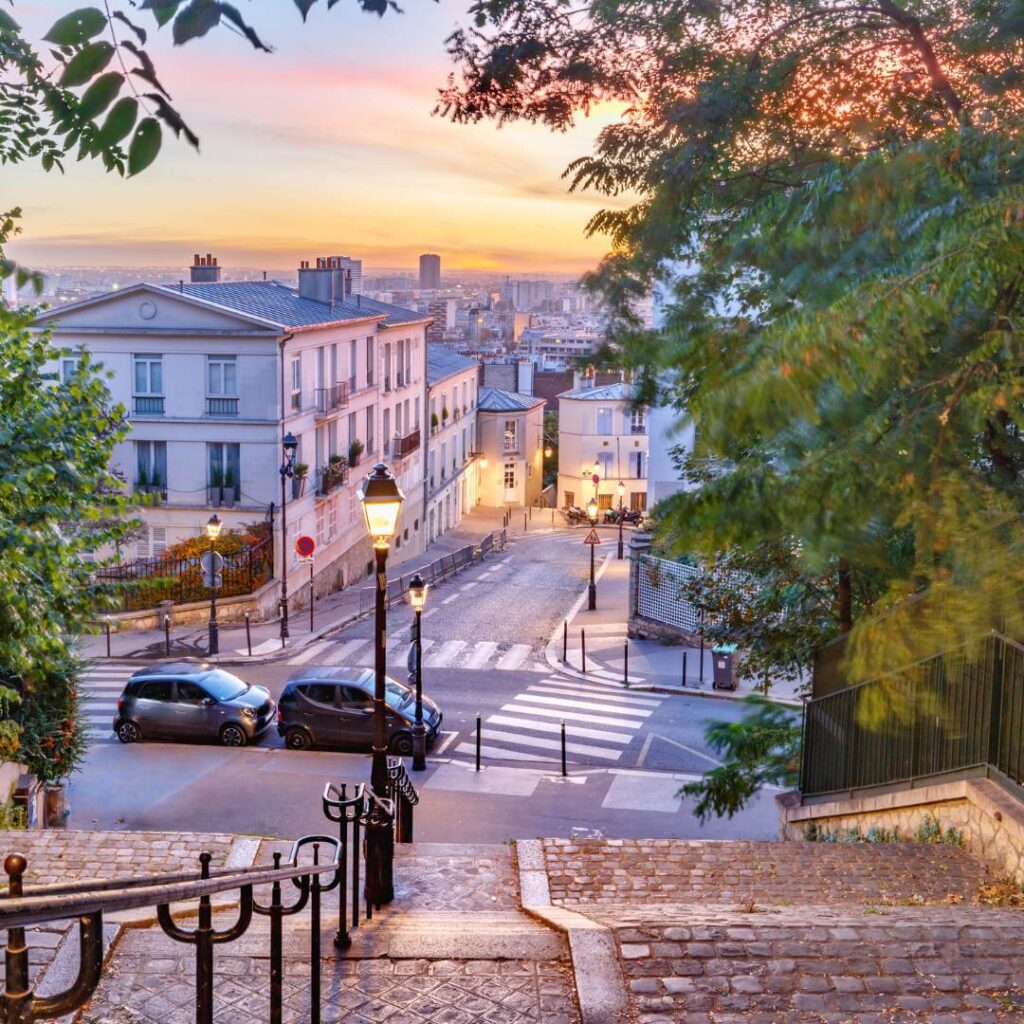
Montmartre & Sacré-Cœur
At the highest point of the district, Basilique du Sacré-Cœur stands with its white domes overlooking the city. The panoramic views from its steps are among the best in Paris. For a fun and easy start to your day, consider a small-group tour that begins with a funicular ride up to Sacré-Cœur. It’s a great way to kick off a day-long Paris highlights tour, without the climb up 300+ steps.
Just below, Place du Tertre is filled with street artists and portrait painters, a nod to the days when Van Gogh, Picasso, and Toulouse-Lautrec called this area home.
Artistic Legacy & Hidden Corners
Montmartre’s artistic past lives on in its galleries, studios, and cultural spaces. A private tour of Montmartre and the Musée d’Orsay with an art historian offers a deeper look into the area’s artistic influence, from the cobbled streets where the Impressionists once painted to the world-renowned collection of masterpieces inside the museum.
The district retains a village-like charm, with winding alleys, hidden courtyards, and historic cafés where artists once gathered. Halle Saint-Pierre, a museum dedicated to outsider and folk art, reflects the area’s ongoing creative spirit.
Moulin Rouge & Diverse Communities
At the foot of Montmartre, the Moulin Rouge continues to celebrate Paris’s cabaret traditions with its extravagant performances. Further into the district, Marché de La Chapelle and the surrounding streets highlight the area’s multicultural influences, offering a mix of global cuisines, markets, and diverse communities.
The 18th Arrondissement is both historic and dynamic. Whether exploring its artistic roots, taking in the city views, or diving into its creative culture, this district captures the essence of both old and modern Paris.
19th Arrondissement: Parks, Culture, and Creativity
The 19th Arrondissement offers a refreshing contrast to central Paris. With sprawling parks, cultural institutions, and a growing creative scene, it’s a place where nature and innovation meet.
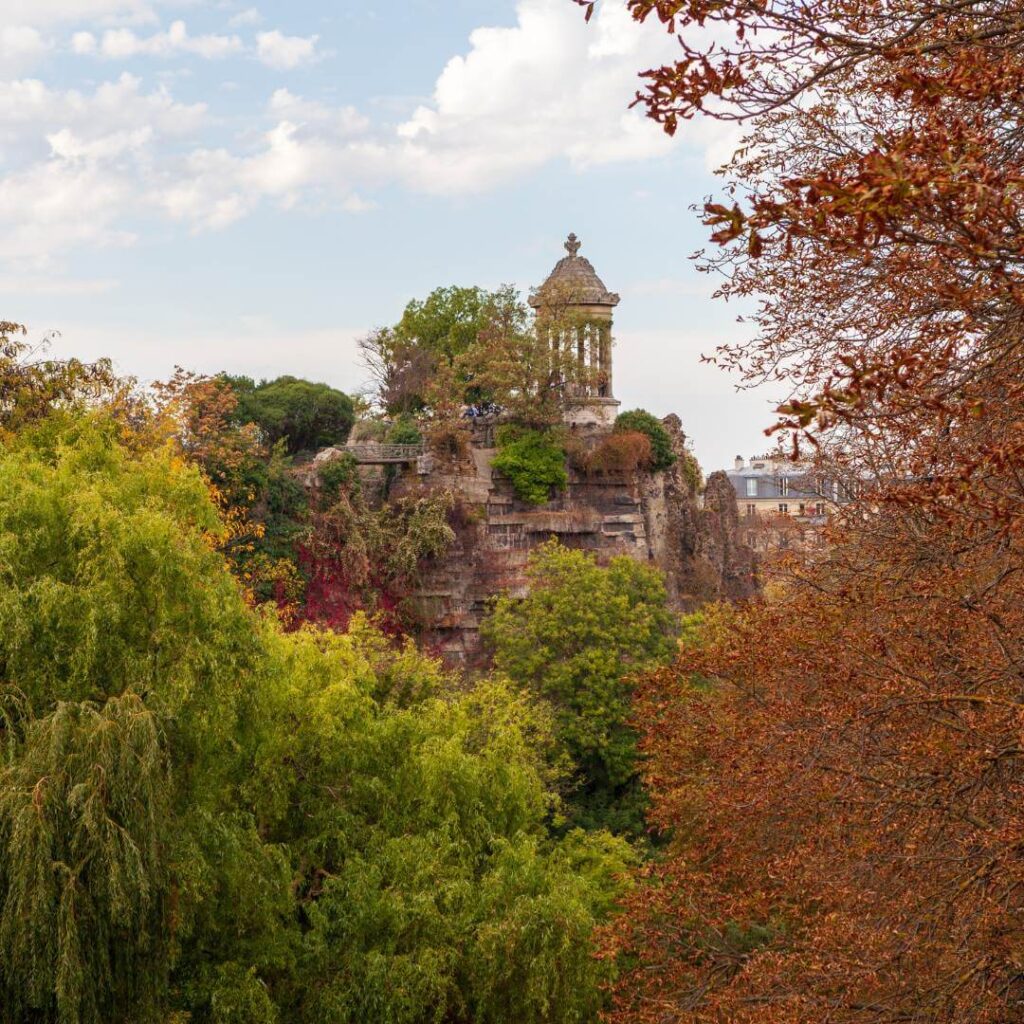
Parc des Buttes-Chaumont
One of the most beautiful parks in Paris, Parc des Buttes-Chaumont feels like a hidden escape. Its cliffs, waterfalls, and meandering paths create a peaceful retreat from urban life. Locals gather here for picnics, morning jogs, and afternoon strolls, enjoying one of the city’s most scenic green spaces.
Parc de la Villette & Cultural Landmarks
The district’s other major green space, Parc de la Villette, is a hub for art, science, and entertainment. Within the park, Cité des Sciences et de l’Industrie, Europe’s largest science museum, features interactive exhibits and immersive experiences. Nearby, the Philharmonie de Paris hosts world-class concerts in a striking modern venue.
Street Art & Creative Energy
The 19th Arrondissement is also known for its street art and cultural projects. Large-scale murals, graffiti, and community-driven art give the neighborhood a colorful, evolving character. Festivals, open-air performances, and local markets make this a district full of creativity and movement.
With its mix of nature, innovation, and culture, the 19th Arrondissement offers a dynamic, evolving side of Paris that’s far from the tourist crowds.
20th Arrondissement: A Creative and Cultural Melting Pot
The 20th Arrondissement is a district of contrasts, blending history, art, and a strong sense of community. Often overlooked by visitors, it offers an authentic, lived-in Paris experience.
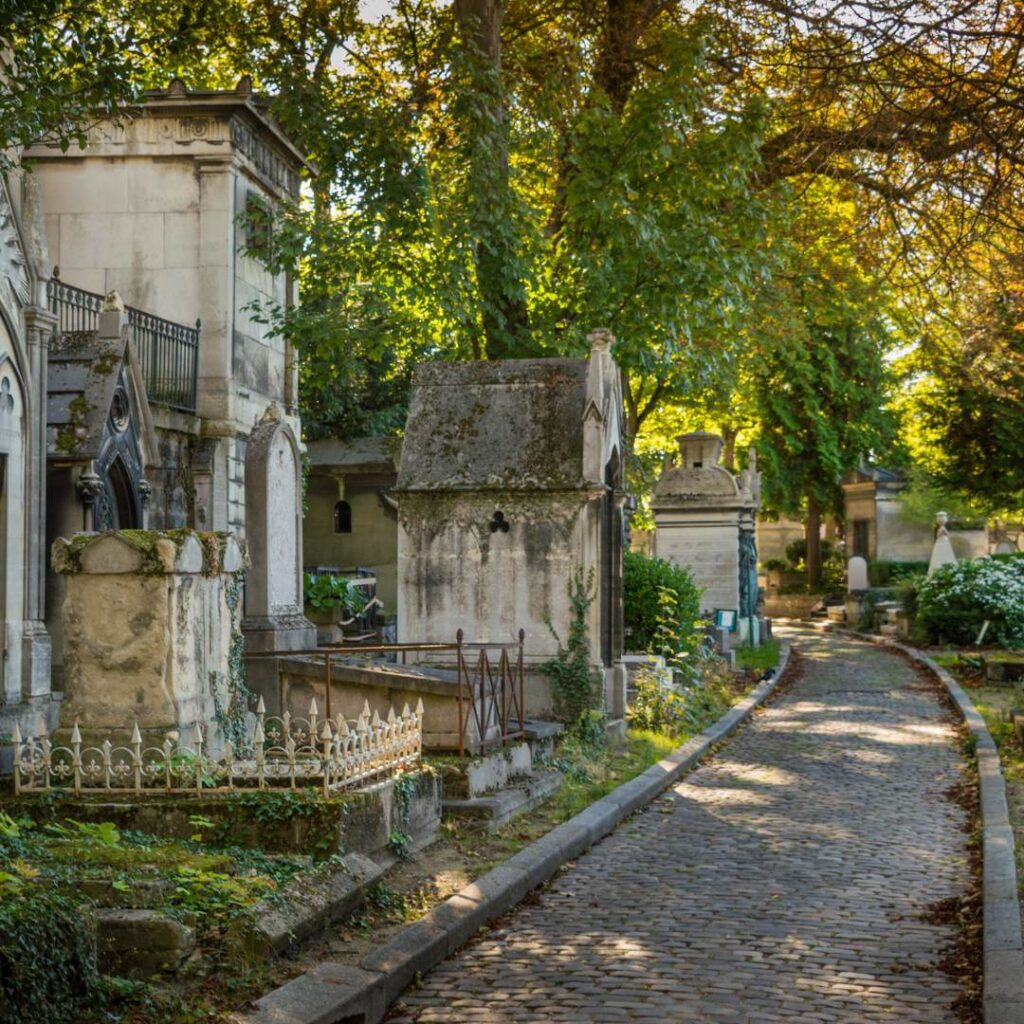
Père Lachaise Cemetery
At its heart lies Père Lachaise Cemetery, one of the most famous cemeteries in the world. This peaceful space is home to the graves of Oscar Wilde, Jim Morrison, Édith Piaf, and many other cultural icons. With its ornate tombs and tree-lined paths, it’s a place of both reflection and history.
Belleville: Art, Culture & City Views
The Belleville neighborhood, once a working-class district, has transformed into a center for art, culture, and diversity. Its streets are lined with studios, galleries, and vibrant street murals, making it one of the most creative parts of the city. At Parc de Belleville, perched on a hill, visitors can enjoy panoramic views of the Paris skyline.
A District Full of Local Energy
The 20th Arrondissement is also known for its lively cultural scene. Markets, independent theaters, and small music venues host events throughout the year. Neighborhood cafés and bistros reflect the area’s welcoming, community-driven spirit.
For those looking to explore a different side of Paris, the 20th Arrondissement offers a mix of history, creativity, and local life, making it one of the city’s most intriguing districts.
The Bottom Line: Paris Through Its Arrondissements
From the historic grandeur of the 1st Arrondissement to the artistic energy of Montmartre, from the elegance of the 16th to the multicultural vibrancy of the 20th, each district tells a unique story.
Paris is more than its famous landmarks. It’s a collection of diverse neighborhoods, each with its own character, history, and personality.
To truly understand Paris, you must explore its arrondissements. Wander through Montmartre’s cobbled streets, savor the flavors of Chinatown in the 13th, or soak in the sophistication of the 8th. Each experience reveals another layer of this extraordinary city.
No matter where you go, you’ll discover a piece of the real Paris—a city as dynamic, varied, and timeless as the people who call it home.
Looking for more Paris travel inspiration? Check out my other Paris travel blog posts!
Every major city has its famous neighborhoods. London has Kensington and Notting Hill. New York boasts Tribeca and the East Village. Rome charms with Trastevere and the Centro Storico.
Paris does things a little differently.
Instead of named neighborhoods, the city is divided into 20 numbered arrondissements. Each one has its own character, attractions, and local culture. To truly understand Paris, you need to understand its arrondissements.
What Is an Arrondissement?
The word arrondissement comes from the French verb arrondir, meaning “to round off” or “encircle.” In Paris, it refers to the city’s official administrative districts.
But these districts aren’t random. Picture Paris as a spiral, like a snail’s shell. At the center is the 1st Arrondissement, home to the Louvre and the city’s historic heart. From there, the arrondissements wind outward in a clockwise pattern.
This layout makes it easy to navigate. The lower the number, the closer you are to the city center—and the more likely you are to find famous landmarks.
Right Bank vs. Left Bank
The River Seine divides Paris into two sections:
- Right Bank (north of the Seine): Includes the 1st-4th, 8th-12th, 16th-20th arrondissements.
- Left Bank (south of the Seine): Includes the 5th-7th, 13th-15th arrondissements.
The first four arrondissements make up Paris Centre, the city’s most historic and central area. Many consider the first eight arrondissements to be central Paris, as they contain most of the city’s famous landmarks, museums, and attractions.
As you move outward, the arrondissements take on different personalities. Some are trendy and artistic, others more residential, and some offer vast green spaces and hidden gems.
Why Understanding Arrondissements Matters
Each Paris arrondissement has a unique feel. Montmartre in the 18th has a village-like charm, while the 13th is known for modern skyscrapers and Paris’s Chinatown.
Whether you’re here for famous sights, quiet cafés, or lesser-known neighborhoods, understanding the arrondissements helps you explore Paris like a pro.
This guide will take you through each district, helping you decide where to stay, what to see, and what makes each area special.
This post may contain affiliate links, meaning I get a small commission if you decide to make a purchase through my links, at no cost to you.
Paris Arrondissements: At a Glance
| Arrondissement | Key Attractions & Neighborhoods |
| 1st | Louvre, Palais Royal, Tuileries Garden, Place Vendôme, Rue Saint Honoré |
| 2nd | Bourse, Galerie Vivienne, Opéra-Comique |
| 3rd | Picasso Museum, Carreau du Temple, Arts et Métiers Museum, Le Marais |
| 4th | Notre Dame Cathedral, Hôtel de Ville, Place des Vosges, Centre Pompidou, Victor Hugo Museum, Le Marais |
| 5th | Latin Quarter, Panthéon, Sorbonne University, Jardin des Plantes |
| 6th | Luxembourg Gardens, Saint-Sulpice Church, Saint Germain des Prés |
| 7th | Eiffel Tower, Musée d’Orsay, Hôtel des Invalides, Champ de Mars |
| 8th | Arc de Triomphe, Champs-Élysées, Grand Palais, Petit Palais, Place de la Concorde |
| 9th | Opéra Garnier (Paris Opera), Folies Bergère, Musée Grévin |
| 10th | Canal Saint-Martin, Place de la République, Gare de l’Est, Gare du Nord |
| 11th | Place de la Bastille, Cirque d’Hiver, Edith Piaf Museum |
| 12th | Opéra Bastille, Bois de Vincennes, Promenade Plantée |
| 13th | National Library of France, Butte-aux-Cailles |
| 14th | Paris Catacombs, Montparnasse, Fondation Cartier |
| 15th | Parc André Citroën, Beaugrenelle Shopping Center |
| 16th | Bois de Boulogne, Fondation Louis Vuitton, Musée Marmottan Monet |
| 17th | Parc Monceau, Musée Cernuschi, Musée Nissim de Camondo |
| 18th | Montmartre, Sacré-Cœur Basilica, Moulin Rouge, Place du Tertre |
| 19th | Parc de la Villette, Cité des Sciences et de l’Industrie, Zénith de Paris |
| 20th | Père Lachaise Cemetery, Parc de Belleville |
1st Arrondissement: The Historic Heart of Paris
The 1st Arrondissement is where Paris began. It’s home to some of the city’s most famous landmarks, luxury shopping streets, and elegant gardens. This district, once the seat of royalty, remains one of the most iconic areas of Paris.

The Louvre & Tuileries Garden
At its core is the Louvre Museum, the world’s largest and most-visited art museum. Once a royal palace, it now houses masterpieces like the Mona Lisa and Venus de Milo. The crowds here can be overwhelming. A small group skip-the-line tour, late day tour, or a private tour offers a more enjoyable experience.
Just outside, the Jardin des Tuileries provides a peaceful escape. This beautifully landscaped garden is perfect for a stroll, a coffee break, or simply admiring the statues and fountains that have inspired artists for centuries.
Luxury & Shopping
This arrondissement is also a hub for luxury. The Place Vendôme, framed by grand neoclassical buildings, is home to high-end jewelry stores and the legendary Ritz Paris. Nearby, Rue Saint Honoré attracts fashion lovers with its designer boutiques and chic Parisian brands.
Cafés & Hidden Gems
For a classic Parisian treat, Angelina Paris on Rue de Rivoli is famous for its rich, velvety hot chocolate, once a favorite of Coco Chanel. Tucked between the grand avenues, charming cafés and quiet courtyards invite visitors to slow down and soak in the elegance of historic Paris.
The 1st Arrondissement is where the past meets the present. Whether exploring world-famous museums, indulging in luxury shopping, or enjoying a quiet moment in the gardens, this district is a perfect introduction to Paris.
2nd Arrondissement: A Hidden Gem
The 2nd Arrondissement is one of the smallest Paris districts, but it’s packed with history, hidden passageways, and a lively local atmosphere. Unlike the grand boulevards nearby, this neighborhood feels more intimate, offering a mix of old-world charm and modern energy.

Covered Passages & Historic Streets
One of the district’s best-kept secrets is its covered passages – beautiful 19th-century shopping arcades with glass ceilings, mosaic floors, and elegant storefronts. Galerie Vivienne is a standout, with its antique bookshops, boutiques, and tea rooms that feel like a step back in time. Nearby, Passage des Panoramas, one of Paris’s oldest covered arcades, is lined with historic restaurants and specialty shops.
Markets & Local Life
The 2nd Arrondissement is also a hub for local food culture. Rue Montorgueil, a lively market street, is filled with fresh produce, traditional fromageries, and some of the best boulangeries in the city. This pedestrian-friendly area is perfect for grabbing a croissant, sipping an espresso, and experiencing everyday Parisian life.
Cultural Landmarks & Dining
The district is also home to the Opéra-Comique, one of France’s oldest musical theaters, known for its elegant performances. For a classic dining experience, Le Grand Colbert offers timeless brasserie fare in a setting that feels straight out of a movie.
Though small, the 2nd Arrondissement is full of character. It’s where historic arcades, vibrant markets, and local cafés create a neighborhood that feels both authentic and effortlessly Parisian.
3rd Arrondissement: The Artistic Heart of Paris
The 3rd Arrondissement is part of Le Marais, one of the city’s most stylish and culturally rich neighborhoods. This area blends history with creativity, where medieval streets lead to contemporary art galleries, and aristocratic mansions house world-class museums.
Museums & Art Scene
One of the district’s highlights is the Musée Picasso, located in the stunning Hôtel Salé. It holds an extensive collection of Picasso’s works, offering insight into the evolution of one of the world’s most influential artists.
Art is everywhere in the 3rd Arrondissement. Independent galleries, design studios, and creative spaces fill the neighborhood, making it one of the most vibrant areas for contemporary and experimental art in Paris.

Historic Streets & Markets
Beyond its artistic reputation, this district is home to some of the best-preserved historic architecture in the city. Hôtels Particuliers, once grand aristocratic mansions, now serve as museums, boutiques, and cultural spaces. The Carreau du Temple, a former covered market, now hosts exhibitions, performances, and creative events that attract artists from around the world.
For food lovers, the Marché des Enfants Rouges is a must-visit. As Paris’s oldest covered market, it offers an incredible mix of fresh produce and international cuisine, from French pastries to Moroccan tagines. The lively atmosphere makes it a favorite for both locals and visitors.
Culinary Experiences & Hidden Gems
Food is an art form in Paris, and learning how to make classic French pastries is an experience in itself. A small-group, chef-led pastry class offers the chance to master laminated dough techniques and enjoy freshly baked croissants and pain au chocolat with a hot drink.
For a sit-down meal, Breizh Café serves some of the best Breton crêpes in Paris, perfectly paired with crisp apple cider.
Looking for the best crêpes in Paris? Read about the 7 best crêperies in Paris here.
The 3rd Arrondissement is a neighborhood that blends old and new. It feels historic yet modern, timeless yet always evolving. It’s an essential stop for anyone wanting to experience the artistic and cultural heartbeat of Paris.
4th Arrondissement: A Blend of History and Vibrancy
The 4th Arrondissement is where medieval Paris meets modern energy. Home to the Île de la Cité and Le Marais, this district blends historic landmarks, charming streets, and a lively cultural scene.

Notre Dame & Medieval Paris
At its heart stands Notre Dame Cathedral, one of the most famous symbols of Paris. This Gothic masterpiece has stood for centuries, and despite the 2019 fire, its restoration continues. Visitors can once again step inside to admire its grandeur.
Just a short walk away, Sainte-Chapelle stuns with its breathtaking stained glass windows. This hidden gem showcases medieval craftsmanship at its finest. Exploring the area with a local guide offers a deeper look into Paris’s medieval past.
The 4th Arrondissement is not just about history—it’s also a food lover’s paradise. Exploring its gastronomy offers a deeper connection to the neighborhood’s culture. For a unique perspective on the Notre Dame area, a secret food tour lets visitors experience the district through its best local flavors.
Le Marais & Place des Vosges
Beyond its historic sites, Le Marais is one of Paris’s most vibrant districts. Place des Vosges, the city’s oldest planned square, offers a quiet escape surrounded by red-brick mansions and shaded walkways. The surrounding streets are lined with art galleries, independent boutiques, and cafés, where history and modern culture blend effortlessly.
The Jewish Quarter & Food Culture
The Jewish quarter, centered around Rue des Rosiers, is a must-visit for both history buffs and food lovers. Traditional bakeries, kosher delis, and the famous L’As du Fallafel draw crowds eager to try one of Paris’s best street foods.
The 4th Arrondissement captures the essence of Paris, where medieval alleyways lead to contemporary art, and historic squares are filled with lively cafés. Whether exploring its history or indulging in its food scene, this district offers an authentic Parisian experience.
5th Arrondissement: The Intellectual and Historic Heart of Paris
The 5th Arrondissement, or Latin Quarter, is one of the oldest parts of the city. Known for its universities, historic landmarks, and vibrant student life, it’s a place where Paris’s academic and cultural heritage shine.

The Sorbonne & Literary Paris
At its center is Sorbonne University, one of the world’s most prestigious institutions. Its presence fills the Latin Quarter with bookstores, cozy cafés, and an intellectual energy that has defined the district for centuries.
A visit to Shakespeare and Company is a must for literature lovers. This historic bookstore has welcomed writers and poets since the early 20th century, and its charming, book-filled interior remains a haven for readers.
Landmarks & Ancient History
The Panthéon, a grand Neoclassical monument, serves as the final resting place for notable figures like Voltaire, Rousseau, and Marie Curie. Just a short walk away, the Arènes de Lutèce, an ancient Roman amphitheater, offers a rare glimpse into Paris’s distant past.
Markets & Dining
For food lovers, Rue Mouffetard is one of the best streets in the city. Lined with markets, fromageries, and traditional cafés, it’s the perfect place to experience everyday Parisian life. A meal at Le Coupe Chou, a historic restaurant tucked into a 17th-century building, offers a cozy and refined dining experience.
A Green Escape
For a break from the lively streets, Jardin des Plantes provides a peaceful retreat. As Paris’s main botanical garden, it features beautifully landscaped paths, historic greenhouses, and the National Museum of Natural History.
With its mix of history, academia, and vibrant culture, the 5th Arrondissement embodies the intellectual spirit of Paris.
6th Arrondissement: Classic Parisian Elegance
The 6th Arrondissement is Paris at its most refined. Home to Saint Germain des Prés and the Luxembourg Gardens, this district has long been a hub for artists, writers, and intellectuals.

Saint Germain des Prés & Literary Icons
Few places hold as much literary and artistic history as Saint Germain des Prés. Once the heart of the city’s intellectual scene, it attracted figures like Jean-Paul Sartre, Simone de Beauvoir, and Ernest Hemingway.
Legendary cafés such as Les Deux Magots and Café de Flore still buzz with conversation. Once gathering spots for philosophers and writers, today they remain iconic places to enjoy a coffee and people-watch. The area is also lined with independent bookstores, antique shops, and designer boutiques, keeping its artistic spirit alive.
Paris lights up each night and there’s no better view than the Saint Germain neighborhood. Explore the bohemian cafes, jazz clubs, narrow cobblestone streets and medieval churches on a private Paris by Night tour of the Left Bank.
The Luxembourg Gardens
One of Paris’s most beautiful green spaces, the Luxembourg Gardens offers a peaceful retreat in the heart of the city. Tree-lined promenades, grand fountains, and its famous green chairs invite visitors to linger. Overlooking the gardens, the Luxembourg Palace stands as a reminder of Paris’s royal past.
Dining & Sweet Treats
The 6th Arrondissement is also known for its excellent dining. Brasserie Lipp, a historic restaurant, serves classic Alsatian dishes in an old-world setting. For something sweet, Pierre Hermé offers some of the best macarons in Paris, known for their bold flavors and perfect texture.
With its mix of literary history, elegant gardens, and stylish cafés, the 6th Arrondissement embodies the sophistication of Paris. Whether strolling its streets or relaxing in its gardens, this district offers a classic Parisian experience.
7th Arrondissement: Elegance and Iconic Landmarks
The 7th Arrondissement is Paris at its most refined. Home to some of the city’s most famous landmarks, this district blends history, culture, and grandeur.

The Eiffel Tower & Champ de Mars
At its heart stands the Eiffel Tower, one of the most recognizable landmarks in the world. Visitors can climb to the top for panoramic views or enjoy a picnic in the Champ de Mars, the sprawling park at its base. For a different perspective, a Seine River cruise with lunch or dinner offers a stunning view of the tower as it lights up at night.
World-Class Museums
Beyond the Eiffel Tower, the 7th Arrondissement is rich in culture. The Musée d’Orsay, housed in a former railway station, features one of the world’s best collections of Impressionist art. Booking a skip-the-line highlight tour helps visitors make the most of their time, while private tours offer deeper insights into both the museum and Montmartre’s artistic history.
A short walk away, the Musée Rodin showcases the sculptor’s masterpieces, including The Thinker, displayed in a peaceful garden setting.
Historic Landmarks & Institutions
The district also holds deep historical significance. The Les Invalides complex, with its golden dome, houses Napoleon Bonaparte’s tomb and several military museums. Nearby, the UNESCO headquarters adds an international dimension to the arrondissement’s prestige.
Dining & Market Streets
For food lovers, Rue Cler is a must-visit. This lively market street is lined with bakeries, cafés, and specialty food shops, perfect for gathering picnic essentials. For a more refined meal, Le Café de l’Esplanade serves elegant French cuisine with views of Les Invalides.
With its iconic landmarks, cultural institutions, and charming streets, the 7th Arrondissement embodies the splendor of Paris.
8th Arrondissement: Luxury and Grandeur
The 8th Arrondissement is where Parisian elegance and prestige take center stage. Known for the Champs-Élysées, grand monuments, and high-end shopping, this district is synonymous with luxury.
The Champs-Élysées & Arc de Triomphe

Often called the most beautiful avenue in the world, the Champs-Élysées stretches from Place de la Concorde to the Arc de Triomphe. Lined with luxury boutiques, cafés, and theaters, it offers a quintessential Parisian experience.
At its western end, the Arc de Triomphe, commissioned by Napoleon, honors those who fought for France. Visitors can climb to the top for sweeping views of the city.
Cultural Landmarks & Museums
History and culture are central to the 8th Arrondissement. Place de la Concorde, once the site of the French Revolution’s guillotine, is now a grand public square. Nearby, the Grand Palais and Petit Palais, with their Beaux-Arts architecture, host art exhibitions, performances, and cultural events year-round.
Luxury Shopping & Fine Dining
This district is a dream for shoppers. The Rue du Faubourg Saint-Honoré and Avenue Montaigne are lined with flagship stores of the world’s top fashion houses. From Chanel to Louis Vuitton, this is Paris’s high-fashion hub.
Dining here is equally refined. The Four Seasons Hotel hosts Le Cinq, a Michelin-starred restaurant offering an unforgettable fine-dining experience. For a quieter escape, Parc Monceau provides a peaceful retreat surrounded by elegant mansions, sculptures, and a Renaissance arch.
With its mix of history, culture, and luxury, the 8th Arrondissement is where Paris shines at its most glamorous.
9th Arrondissement: A Fusion of Culture and Style
The 9th Arrondissement blends historic grandeur, artistic energy, and a vibrant local scene. From the Palais Garnier to the trendy streets of South Pigalle, this district showcases the city’s evolving charm.

Palais Garnier & Theaters
At its heart stands Palais Garnier, one of the world’s most opulent opera houses. This Beaux-Arts masterpiece, with its gold detailing, grand staircases, and Chagall-painted ceiling, has inspired legends—including The Phantom of the Opera. Visitors can tour its lavish halls or attend a ballet or opera performance for a truly unforgettable evening.
Shopping & Grand Boulevards
Beyond the opera house, the Grands Boulevards lead into one of Paris’s best shopping districts. Boulevard Haussmann is home to the city’s legendary Galeries Lafayette and Printemps department stores. These shopping destinations combine luxury fashion, gourmet food, and stunning glass-domed architecture, making them attractions in their own right.
The Trendy Side of the 9th: South Pigalle & SoPi
The 9th Arrondissement isn’t just about elegance—it also has a trendy, artistic edge. Once a red-light district, South Pigalle (SoPi) has transformed into one of Paris’s coolest neighborhoods. The area is packed with hip cafés, craft cocktail bars, and independent boutiques, drawing a younger, creative crowd.
Nearby, Rue des Martyrs, a bustling market street, is lined with artisanal food shops, bakeries, and cafés. It’s the perfect place for a morning coffee and fresh pastries while experiencing the rhythm of everyday Parisian life.
The 9th Arrondissement offers something for every traveler. Whether exploring historic theaters, indulging in high-end shopping, or discovering Paris’s trendiest cafés, this district is a perfect mix of culture and style.
10th Arrondissement: Canal-Side Charm and Urban Energy
The 10th Arrondissement is where old Paris meets modern creativity. Known for its scenic canals, vibrant nightlife, and diverse influences, this district offers a glimpse into local life beyond the typical tourist paths.

Canal Saint-Martin: The Heart of the 10th
At the center of the district, Canal Saint-Martin is a favorite spot for Parisians. Its iron footbridges, tree-lined quays, and relaxed atmosphere make it a go-to for afternoon picnics, evening drinks, and casual strolls. Small boutiques, bistros, and cafés along the canal add to its bohemian charm.
Train Stations & Cultural Shifts
The 10th Arrondissement is also a major transport hub, home to Gare du Nord and Gare de l’Est, two of the city’s busiest train stations. These stations connect Paris to other major European cities, making this district a true gateway. Just steps away, however, the atmosphere shifts. Hidden courtyards, emerging food scenes, and lively cultural spaces create a more intimate and creative side of the city.
Dining & Nightlife Hotspots
The 10th Arrondissement has become one of Paris’s trendiest dining destinations. South of the canal, Rue de Paradis and Rue Sainte-Marthe are lined with trendy restaurants and cocktail bars. The mix of international flavors, creative bistros, and natural wine bars attracts locals, artists, and young professionals looking for something beyond the traditional Parisian brasserie.
Markets & Multicultural Influences
Despite its modern energy, the 10th Arrondissement retains deep cultural roots. Passage Brady, known as “Little India,” is a covered arcade filled with Indian and Pakistani restaurants, spice shops, and specialty markets. Nearby, the Saint-Quentin and Saint-Martin markets, housed in wrought-iron halls, offer fresh produce, artisan cheeses, and local goods, bringing a classic Parisian feel to the district.
The 10th Arrondissement is a district in constant evolution. Whether you’re strolling along the canal, tasting global flavors, or discovering hidden gems, this neighborhood offers a fresh perspective on Paris.
11th Arrondissement: A Local’s Paris
The 11th Arrondissement is where Paris comes alive. Known for its artistic energy, vibrant nightlife, and revolutionary history, this district offers an authentic look at Parisian life.

Place de la Bastille: A Historic Symbol
At its heart lies Place de la Bastille, a powerful symbol of the French Revolution. While the prison itself no longer stands, the square remains a gathering place for protests, concerts, and cultural events. Nearby, the Opéra Bastille, a modern performance venue, hosts world-class opera and ballet throughout the year.
A Neighborhood for Locals
Unlike more tourist-heavy areas, the 11th Arrondissement is a place where Parisians live, work, and socialize. The district is filled with small family-run cafés, independent boutiques, and bistros catering to locals rather than visitors. This means great food, excellent wine, and a true Parisian atmosphere—without the crowds.
A Hub for Art & Creativity
The 11th Arrondissement has long been a center for artists, musicians, and creatives. Atelier des Lumières, a former foundry, now hosts immersive digital art exhibits that bring famous paintings to life through light and sound. Throughout the district, galleries, artist studios, and live music venues showcase both established and emerging talent.
Nightlife & Social Scene
For those looking to experience Paris after dark, Rue Oberkampf and its surrounding streets offer one of the city’s best nightlife scenes. The area is packed with bars, music clubs, and late-night cafés, offering everything from craft cocktails to live jazz. The casual, energetic vibe makes it a great spot to mix with locals and experience the social side of Paris.
The 11th Arrondissement is best explored without an agenda. Wander, discover, and let the neighborhood’s energy guide you. Whether you’re enjoying a quiet coffee in a corner café or dancing at a late-night club, this is where the city truly comes to life.
12th Arrondissement: Green Spaces and Hidden Treasures
The 12th Arrondissement is one of Paris’s most underrated districts. Stretching from Place de la Bastille to the city’s eastern edge, it offers a blend of history, modern renewal, and expansive green spaces.

Bois de Vincennes: Paris’s Largest Park
One of the district’s greatest treasures is the Bois de Vincennes, the largest park in Paris. This sprawling green space is perfect for long walks, picnics, and outdoor activities. Within the park, the Château de Vincennes, a medieval fortress, stands as a reminder of the city’s royal past. The park also features botanical gardens, scenic lakes, and wooded trails, offering a peaceful retreat from city life.
Promenade Plantée & Viaduc des Arts
The Promenade Plantée, an elevated garden walkway, winds through the 12th Arrondissement, offering unique views of rooftops and hidden courtyards. Originally built on an old railway viaduct, it inspired New York City’s High Line and remains a hidden gem for those seeking a quiet stroll.
Below, the Viaduc des Arts hosts artisan workshops, galleries, and craft studios, showcasing the neighborhood’s creative energy. It’s the perfect spot to browse handmade goods and discover local artists.
Markets & Cultural Landmarks
The Opéra Bastille, a modern opera house, anchors the district’s cultural scene. It hosts a mix of classical and contemporary productions, making it a must-visit for performance lovers.
For food enthusiasts, the Marché d’Aligre is one of Paris’s best open-air markets. Bustling stalls overflow with fresh produce, artisan cheeses, and gourmet specialties, while nearby bistros offer a lively setting to enjoy local flavors. Private market tours provide an immersive experience, and family-friendly tours make it fun for all ages.
A Different Rhythm of Paris
The 12th Arrondissement offers a quieter, greener, and more laid-back side of Paris. Whether wandering hidden gardens, savoring fresh market finds, or exploring its artistic spaces, this district invites visitors to experience the city at a different pace.
13th Arrondissement: A Different Side of Paris
The 13th Arrondissement is unlike any other part of Paris. Known for its modern architecture, thriving Asian community, and bold street art, this district offers a fresh and unexpected perspective on the city.

Paris’s Chinatown: A Cultural Hub
The area around Avenue de Choisy and Avenue d’Ivry is the heart of Paris’s Chinatown. Here, bustling supermarkets, dim sum restaurants, and specialty tea shops bring the flavors of China, Vietnam, and Thailand to the city.
The annual Chinese New Year Parade is a highlight, filling the streets with dragon dances, live music, and vibrant festivities. It’s a celebration of cultural heritage that brings the community together.
Street Art & Urban Creativity
The 13th Arrondissement is a canvas for some of the world’s top street artists. Massive murals transform building facades into works of art, making this district feel like an open-air gallery. Walking through its streets is an experience in itself, with colorful, large-scale pieces stretching across entire city blocks.
Modern Landmarks & Riverside Walks
The district is also home to one of its most striking landmarks: Bibliothèque Nationale de France (BNF). This modern glass library, designed to resemble four open books, is a symbol of the arrondissement’s contemporary transformation.
Along the nearby Seine River, scenic promenades provide peaceful views of the city’s evolving skyline, offering a contrast to the historic sights of central Paris.
Food & Dining Scene
The 13th Arrondissement is a dream for food lovers. The streets are lined with authentic dumpling houses, Vietnamese pho spots, and Japanese ramen shops, serving some of the best Asian cuisine in Paris.
Beyond its Asian influences, the district has a growing café culture and an emerging dining scene, making it an exciting place to explore different flavors and culinary styles.
A Neighborhood of Contrasts
The 13th Arrondissement feels worlds away from the classic postcard image of Paris—but that’s exactly what makes it special. It’s a district where modernity meets tradition, and where different cultures blend to create something uniquely Parisian.
14th Arrondissement: A Bohemian Past and Quiet Charm
The 14th Arrondissement offers a peaceful, artistic, and historic side of Paris. Once a hub for bohemian creatives, it now blends relaxed neighborhoods, cultural landmarks, and green spaces, making it a perfect escape from the city’s bustle.
Montparnasse: The Heart of Paris’s Bohemian Past
In the early 20th century, Montparnasse was the center of Paris’s artistic and literary scene. Writers like Hemingway, Picasso, and Fitzgerald gathered in its cafés and brasseries, exchanging ideas over long conversations.
Today, La Coupole and Le Dôme, two legendary spots, still welcome locals and visitors, preserving the neighborhood’s creative legacy. The area remains a great place to soak in the atmosphere of old Paris.
Parks & Green Spaces
For nature lovers, Parc Montsouris is one of the arrondissement’s highlights. With rolling lawns, a tranquil lake, and tree-lined paths, it’s perfect for a relaxing walk, a morning jog, or a family picnic. This park offers a quiet escape from the city’s fast pace, making it a favorite among locals.

The Catacombs of Paris: A Haunting Underground World
One of the most unusual attractions in Paris lies beneath the 14th Arrondissement: the Catacombs of Paris. This underground ossuary holds the remains of millions of Parisians, arranged in intricate, eerie formations. Visitors can take a guided tour through its tunnels, experiencing a haunting yet fascinating look at the city’s past.
Fondation Cartier: A Modern Art Hub
Adding a contemporary edge to the district, the Fondation Cartier pour l’Art Contemporain is housed in a striking glass building. This museum showcases bold contemporary art, photography, and cultural exhibitions, keeping the arrondissement’s artistic spirit alive.
A Different Side of Paris
The 14th Arrondissement is perfect for those who want to step away from the crowds and experience a more local, artistic, and peaceful Paris. Whether wandering historic streets, relaxing in green spaces, or exploring modern art, this district offers a unique and deeply connected look at the city’s past and present.
15th Arrondissement: A Modern and Relaxed Paris
The 15th Arrondissement offers a residential, contemporary side of Paris. With modern architecture, open spaces, and local markets, it’s a district where Parisians live, work, and unwind.
Parc André Citroën: Green Space with a View
Built on a former car factory site, Parc André Citroën is a vast green retreat in the city. Its open lawns, themed gardens, and futuristic greenhouse attract families, joggers, and nature lovers. A hot air balloon ride from the park offers a unique aerial view of Paris, making it a standout experience.
Beaugrenelle: Shopping with a Modern Edge
For a contemporary shopping experience, the Beaugrenelle Shopping Center offers a sleek alternative to the historic shopping streets of central Paris. This modern complex features international brands, restaurants, and a cinema, making it a convenient stop for shopping and entertainment.

Aviation & Science Enthusiasts
The 15th Arrondissement is also home to one of the world’s oldest aviation museums. The Musée de l’Air et de l’Espace, located at Paris-Le Bourget Airport, showcases historic aircraft, space exhibits, and the first Concorde prototype. It’s a must-visit for aviation and technology enthusiasts.
Local Dining & Markets
For a taste of everyday Paris, Rue du Commerce is lined with bakeries, cafés, and small boutiques. Unlike the tourist-heavy districts, this area caters to locals, offering a more authentic dining and shopping experience.
A Different Side of Paris
The 15th Arrondissement provides a refreshing contrast to the city’s historic core. With its modern development, green spaces, and laid-back charm, it’s a great place to experience local life away from the crowds.
16th Arrondissement: Sophistication and Green Spaces
The 16th Arrondissement is one of Paris’s most elegant districts. Known for its upscale neighborhoods, prestigious museums, and vast parks, it offers a refined, peaceful Parisian experience.

Trocadéro: The Best Eiffel Tower Views
For one of the best views of the Eiffel Tower, head to Trocadéro. This elevated square provides stunning panoramic views, especially at sunrise or sunset. Nearby, the Palais de Chaillot houses several museums, including the Musée de l’Homme and the Cité de l’Architecture et du Patrimoine, making this area a cultural hotspot.
Bois de Boulogne: Paris’s Largest Green Space
For a break from the city’s energy, Bois de Boulogne offers a vast retreat twice the size of Central Park. With lakes, walking trails, and picnic spots, it’s perfect for nature lovers. The Jardin d’Acclimatation, a family-friendly amusement park, and the Fondation Louis Vuitton, a striking glass building featuring contemporary art, add to the park’s appeal.
Art & Culture
Art lovers should visit the Marmottan Monet Museum, home to the largest collection of Monet’s works. This small, intimate museum offers a less crowded way to enjoy the artist’s masterpieces.
Fine Dining & Elegant Living
Dining in the 16th Arrondissement is as refined as its surroundings. From Michelin-starred restaurants to elegant bistros, the area is known for high-quality dining. Whether enjoying a leisurely meal with a view or exploring its world-class museums, visitors here experience Paris at its most sophisticated.
17th Arrondissement: Classic Paris with a Modern Twist
The 17th Arrondissement offers a blend of old and new Paris. From the bustling streets near the Arc de Triomphe to the charming Batignolles neighborhood, this district combines classic elegance with a growing creative scene.

Avenue des Ternes & Classic Parisian Charm
Near the Arc de Triomphe, Avenue des Ternes is lined with cafés, bakeries, and local shops. With its wide boulevards and grand apartment buildings, this area embodies postcard-perfect Parisian charm.
Batignolles: A Bohemian, Trendy Neighborhood
Further into the arrondissement, Batignolles offers a relaxed, bohemian vibe. Once overlooked, this area has become popular with young professionals and families. Organic markets, independent boutiques, and hip cafés give the neighborhood a trendy, local feel.
The Square des Batignolles, a beautiful English-style garden, adds to the area’s community-oriented atmosphere.
Local Markets & Everyday Paris
Unlike the more touristy parts of the city, the 17th Arrondissement provides a genuine local experience. The Marché Poncelet and Marché des Batignolles offer fresh produce, gourmet cheeses, and artisan goods. Here, you can start the morning with coffee at a corner café, shop for ingredients at the market, and end the day with wine at a quiet bistro.
A Creative & Evolving District
The arrondissement also has a thriving arts scene, with small galleries and independent theaters showcasing local artists and performers. This creative energy blends seamlessly with the district’s classic Parisian charm, making it a unique place to explore.
A Taste of Everyday Paris
The 17th Arrondissement is perfect for those wanting to experience authentic Paris. Whether strolling elegant avenues, discovering hidden cafés, or relaxing in its leafy parks, visitors here see a side of the city that feels lived-in, local, and effortlessly Parisian.
18th Arrondissement: Bohemian Spirit and Iconic Landmarks
The 18th Arrondissement is a blend of artistic heritage, multicultural energy, and classic Parisian charm. Best known for Montmartre, this hilltop neighborhood offers stunning views, historic streets, and a creative atmosphere that still echoes its bohemian past.

Montmartre & Sacré-Cœur
At the highest point of the district, Basilique du Sacré-Cœur stands with its white domes overlooking the city. The panoramic views from its steps are among the best in Paris. For a fun and easy start to your day, consider a small-group tour that begins with a funicular ride up to Sacré-Cœur. It’s a great way to kick off a day-long Paris highlights tour, without the climb up 300+ steps.
Just below, Place du Tertre is filled with street artists and portrait painters, a nod to the days when Van Gogh, Picasso, and Toulouse-Lautrec called this area home.
Artistic Legacy & Hidden Corners
Montmartre’s artistic past lives on in its galleries, studios, and cultural spaces. A private tour of Montmartre and the Musée d’Orsay with an art historian offers a deeper look into the area’s artistic influence, from the cobbled streets where the Impressionists once painted to the world-renowned collection of masterpieces inside the museum.
The district retains a village-like charm, with winding alleys, hidden courtyards, and historic cafés where artists once gathered. Halle Saint-Pierre, a museum dedicated to outsider and folk art, reflects the area’s ongoing creative spirit.
Moulin Rouge & Diverse Communities
At the foot of Montmartre, the Moulin Rouge continues to celebrate Paris’s cabaret traditions with its extravagant performances. Further into the district, Marché de La Chapelle and the surrounding streets highlight the area’s multicultural influences, offering a mix of global cuisines, markets, and diverse communities.
The 18th Arrondissement is both historic and dynamic. Whether exploring its artistic roots, taking in the city views, or diving into its creative culture, this district captures the essence of both old and modern Paris.
19th Arrondissement: Parks, Culture, and Creativity
The 19th Arrondissement offers a refreshing contrast to central Paris. With sprawling parks, cultural institutions, and a growing creative scene, it’s a place where nature and innovation meet.

Parc des Buttes-Chaumont
One of the most beautiful parks in Paris, Parc des Buttes-Chaumont feels like a hidden escape. Its cliffs, waterfalls, and meandering paths create a peaceful retreat from urban life. Locals gather here for picnics, morning jogs, and afternoon strolls, enjoying one of the city’s most scenic green spaces.
Parc de la Villette & Cultural Landmarks
The district’s other major green space, Parc de la Villette, is a hub for art, science, and entertainment. Within the park, Cité des Sciences et de l’Industrie, Europe’s largest science museum, features interactive exhibits and immersive experiences. Nearby, the Philharmonie de Paris hosts world-class concerts in a striking modern venue.
Street Art & Creative Energy
The 19th Arrondissement is also known for its street art and cultural projects. Large-scale murals, graffiti, and community-driven art give the neighborhood a colorful, evolving character. Festivals, open-air performances, and local markets make this a district full of creativity and movement.
With its mix of nature, innovation, and culture, the 19th Arrondissement offers a dynamic, evolving side of Paris that’s far from the tourist crowds.
20th Arrondissement: A Creative and Cultural Melting Pot
The 20th Arrondissement is a district of contrasts, blending history, art, and a strong sense of community. Often overlooked by visitors, it offers an authentic, lived-in Paris experience.

Père Lachaise Cemetery
At its heart lies Père Lachaise Cemetery, one of the most famous cemeteries in the world. This peaceful space is home to the graves of Oscar Wilde, Jim Morrison, Édith Piaf, and many other cultural icons. With its ornate tombs and tree-lined paths, it’s a place of both reflection and history.
Belleville: Art, Culture & City Views
The Belleville neighborhood, once a working-class district, has transformed into a center for art, culture, and diversity. Its streets are lined with studios, galleries, and vibrant street murals, making it one of the most creative parts of the city. At Parc de Belleville, perched on a hill, visitors can enjoy panoramic views of the Paris skyline.
A District Full of Local Energy
The 20th Arrondissement is also known for its lively cultural scene. Markets, independent theaters, and small music venues host events throughout the year. Neighborhood cafés and bistros reflect the area’s welcoming, community-driven spirit.
For those looking to explore a different side of Paris, the 20th Arrondissement offers a mix of history, creativity, and local life, making it one of the city’s most intriguing districts.
The Bottom Line: Paris Through Its Arrondissements
From the historic grandeur of the 1st Arrondissement to the artistic energy of Montmartre, from the elegance of the 16th to the multicultural vibrancy of the 20th, each district tells a unique story.
Paris is more than its famous landmarks. It’s a collection of diverse neighborhoods, each with its own character, history, and personality.
To truly understand Paris, you must explore its arrondissements. Wander through Montmartre’s cobbled streets, savor the flavors of Chinatown in the 13th, or soak in the sophistication of the 8th. Each experience reveals another layer of this extraordinary city.
No matter where you go, you’ll discover a piece of the real Paris—a city as dynamic, varied, and timeless as the people who call it home.
Looking for more Paris travel inspiration? Check out my other Paris travel blog posts!